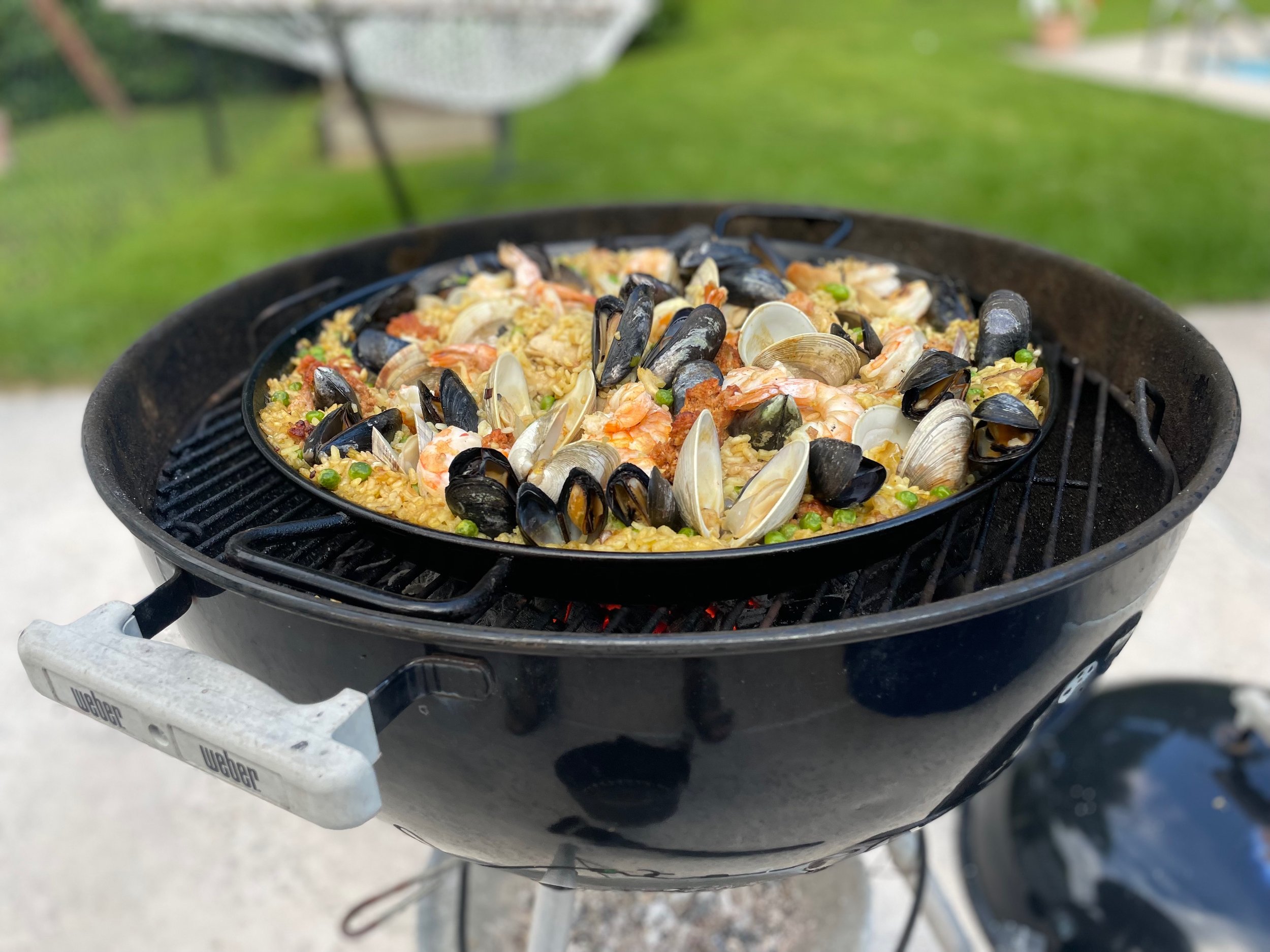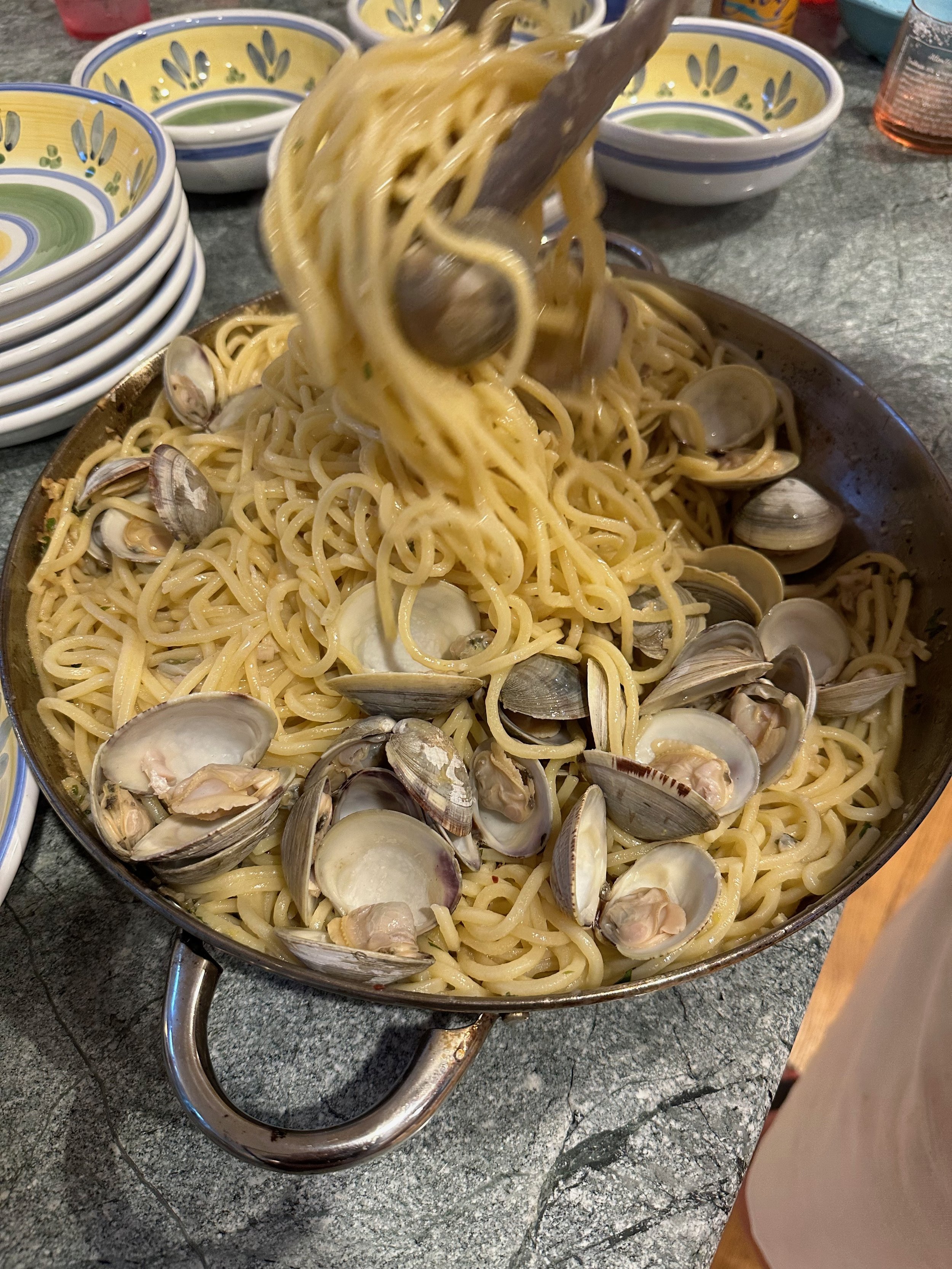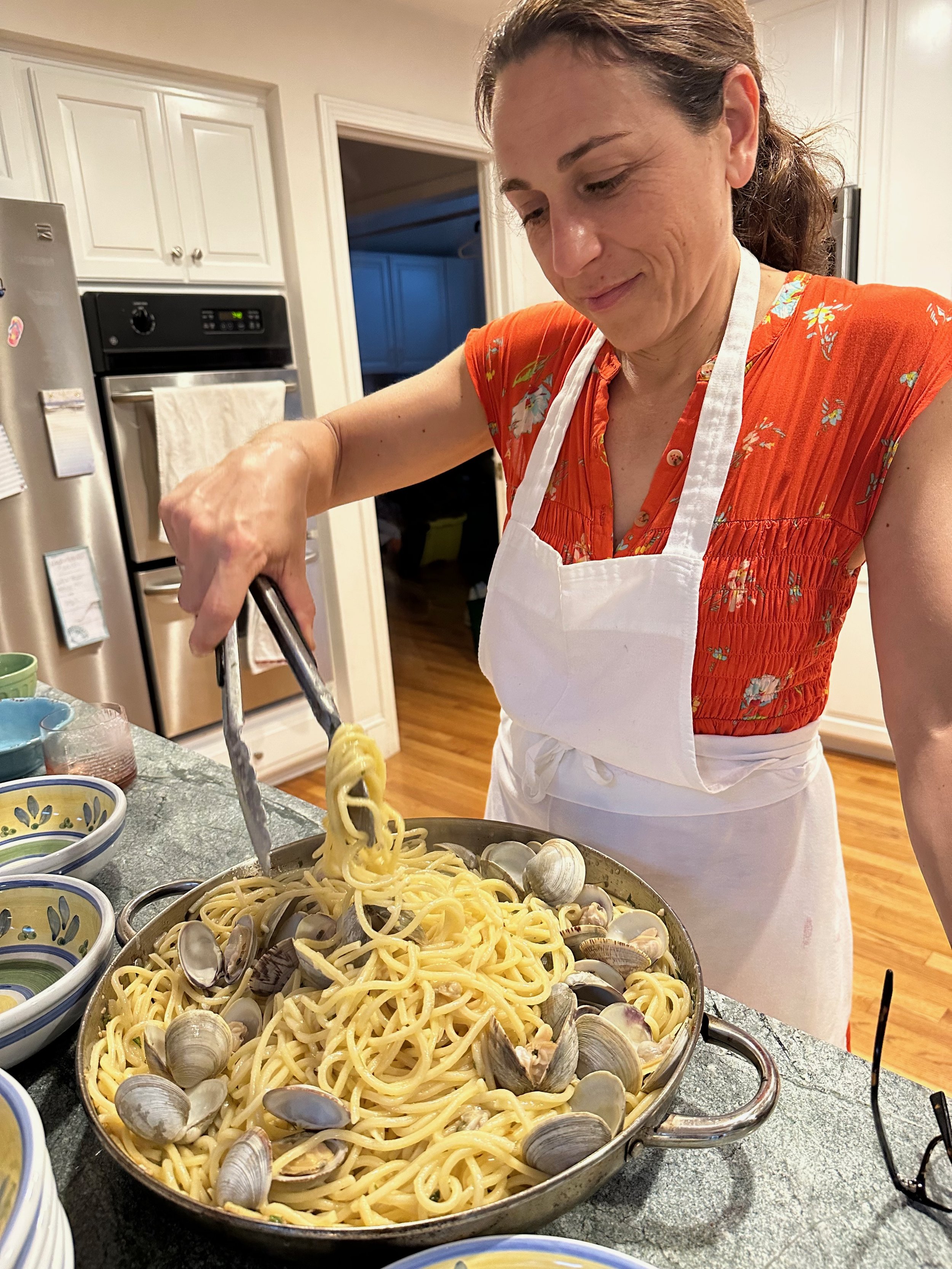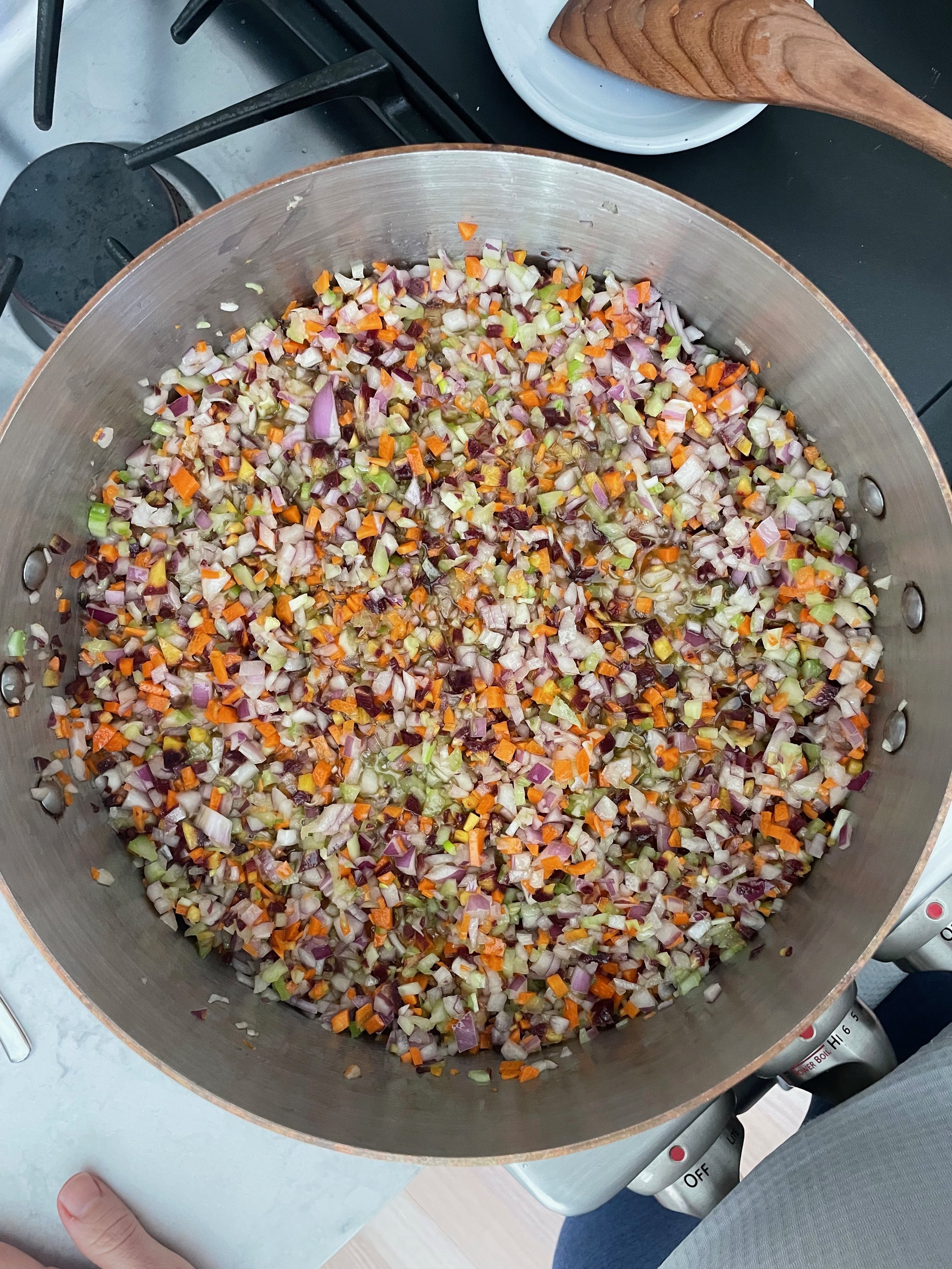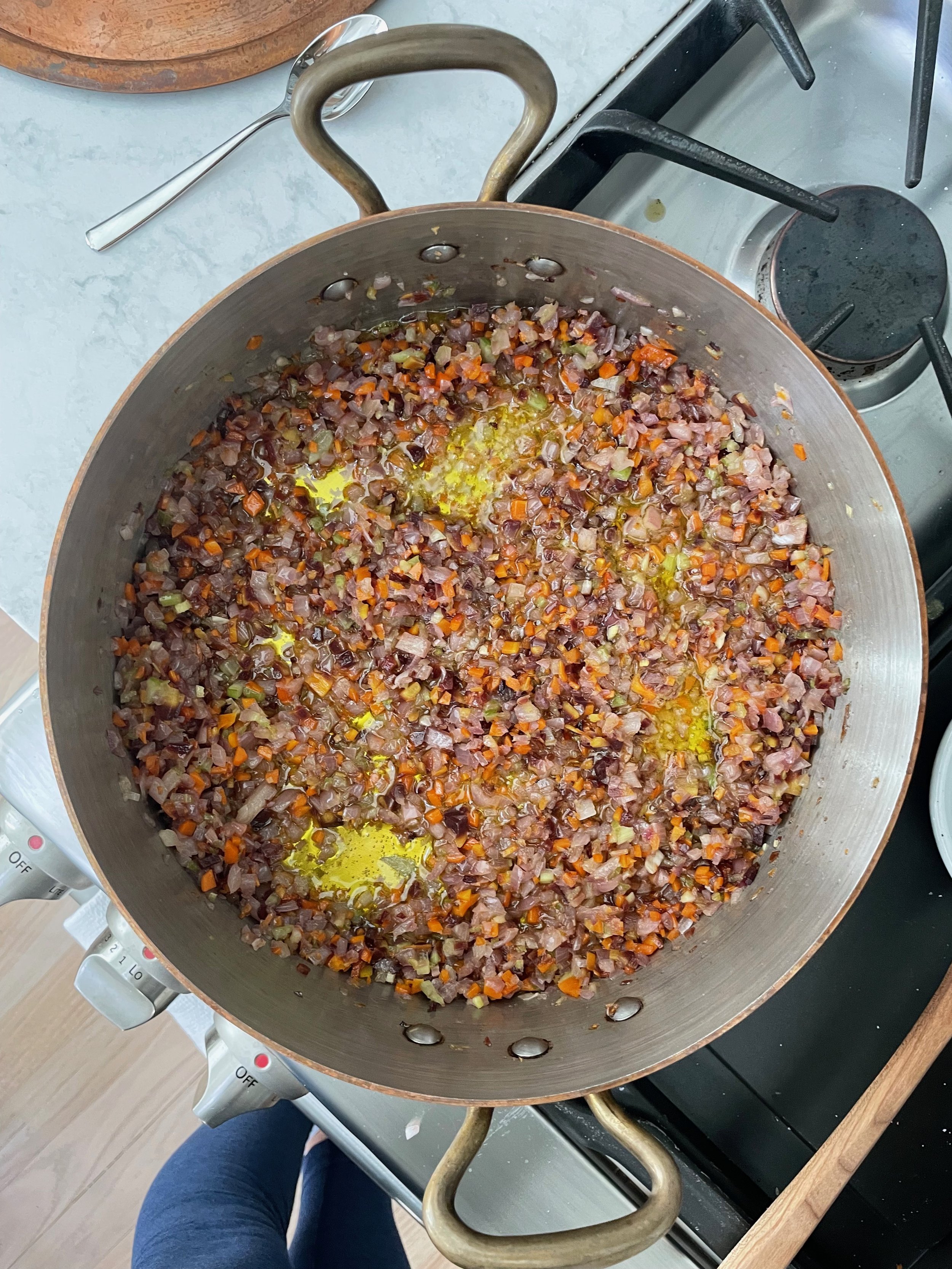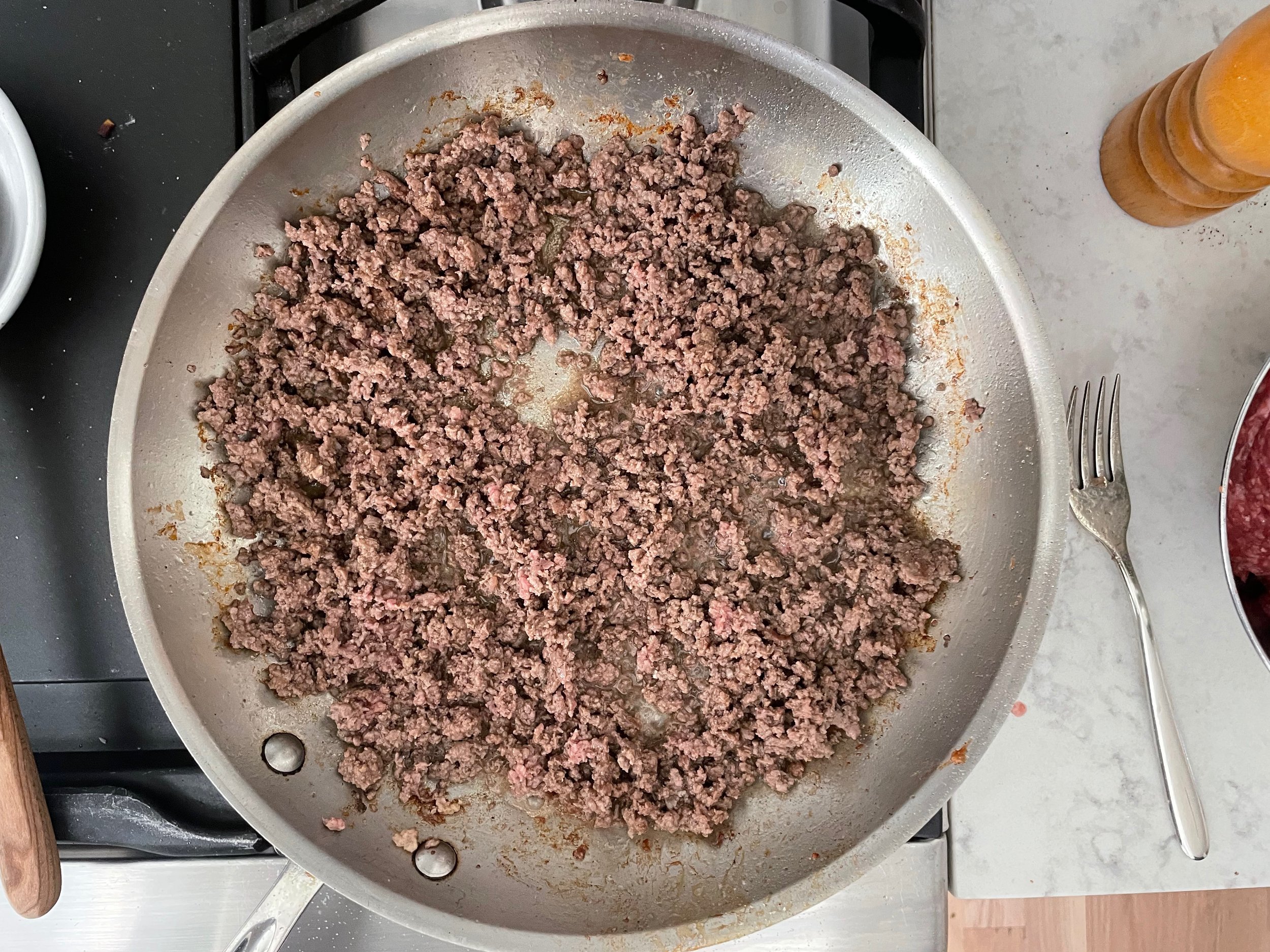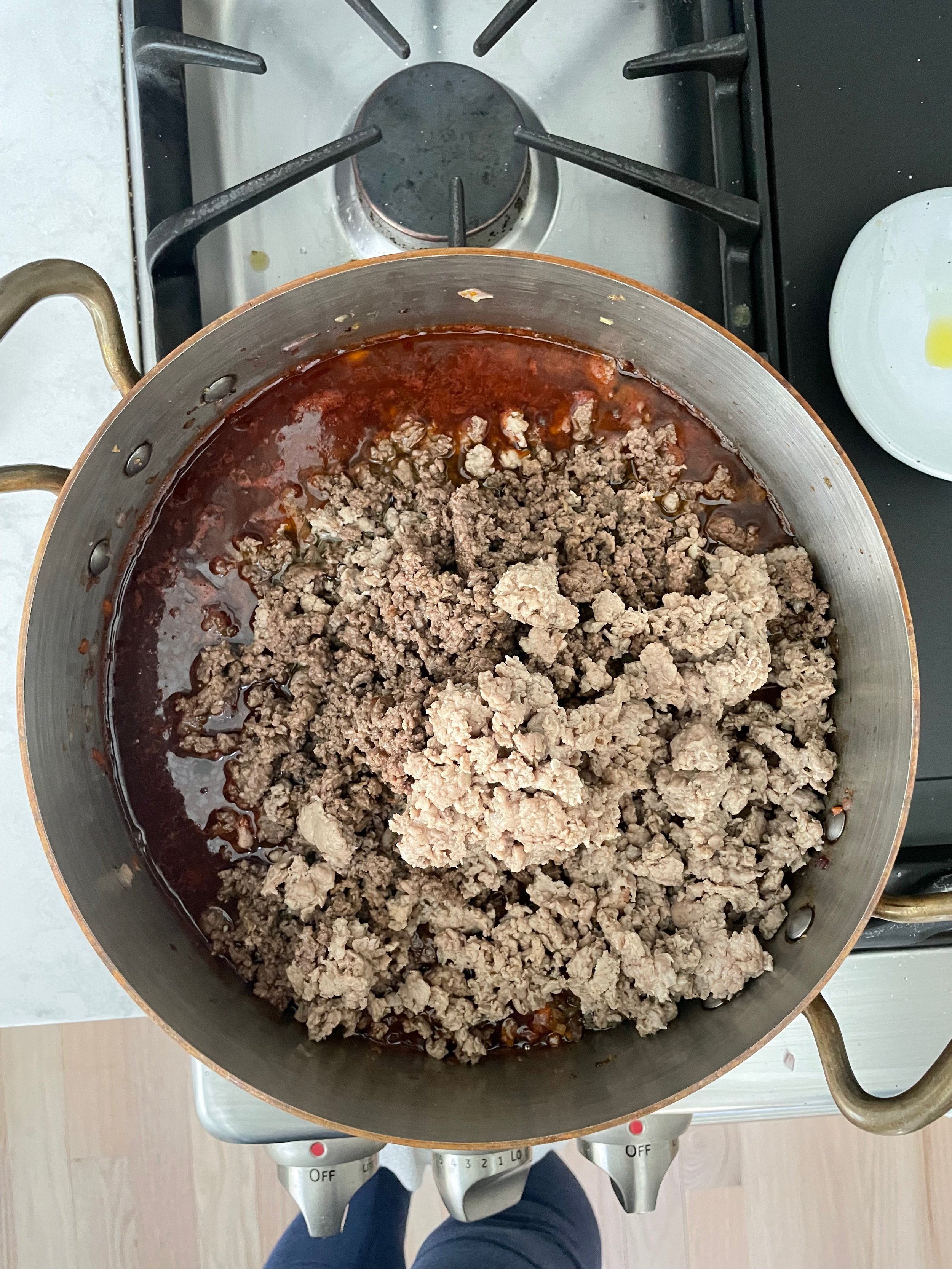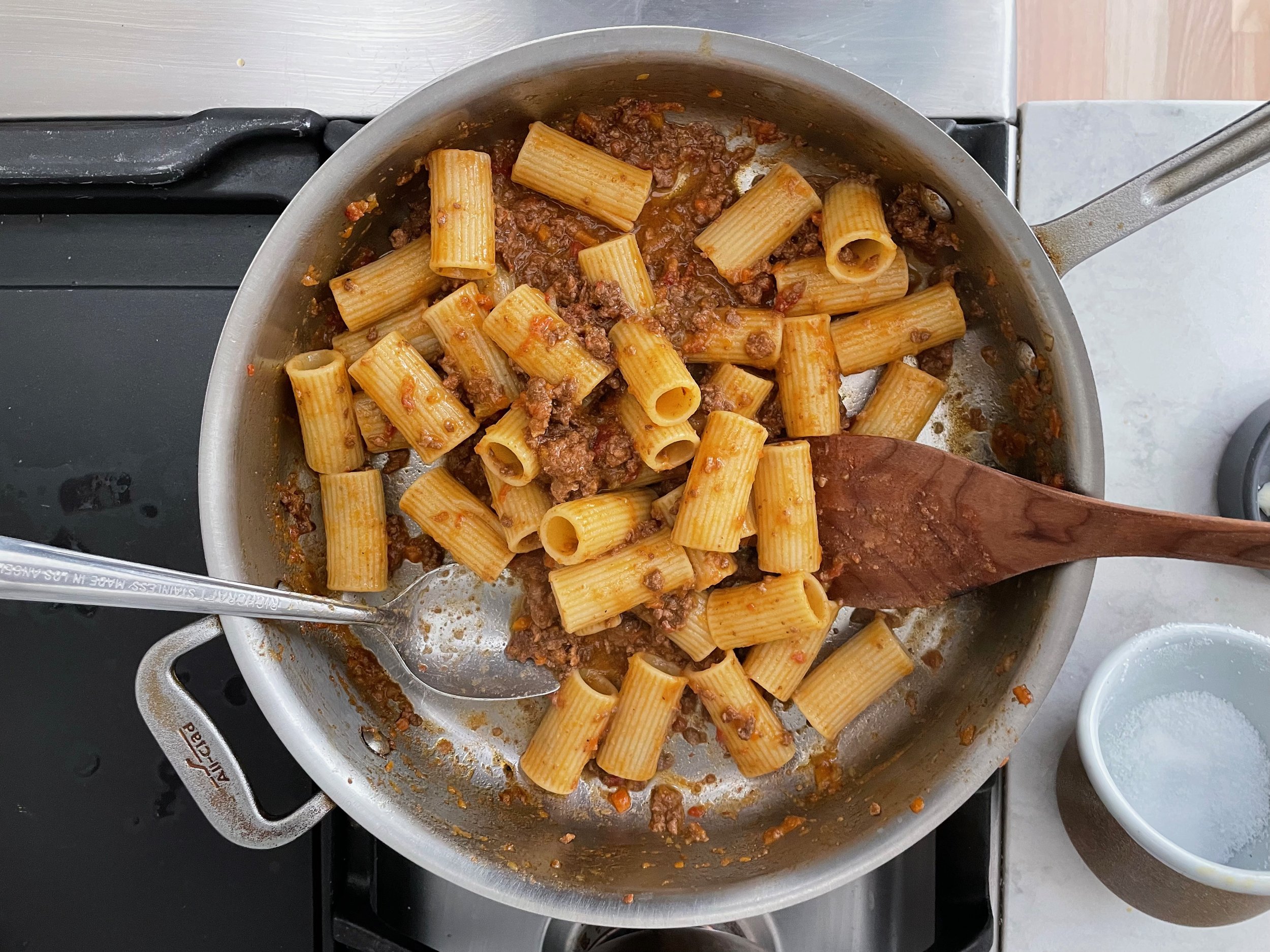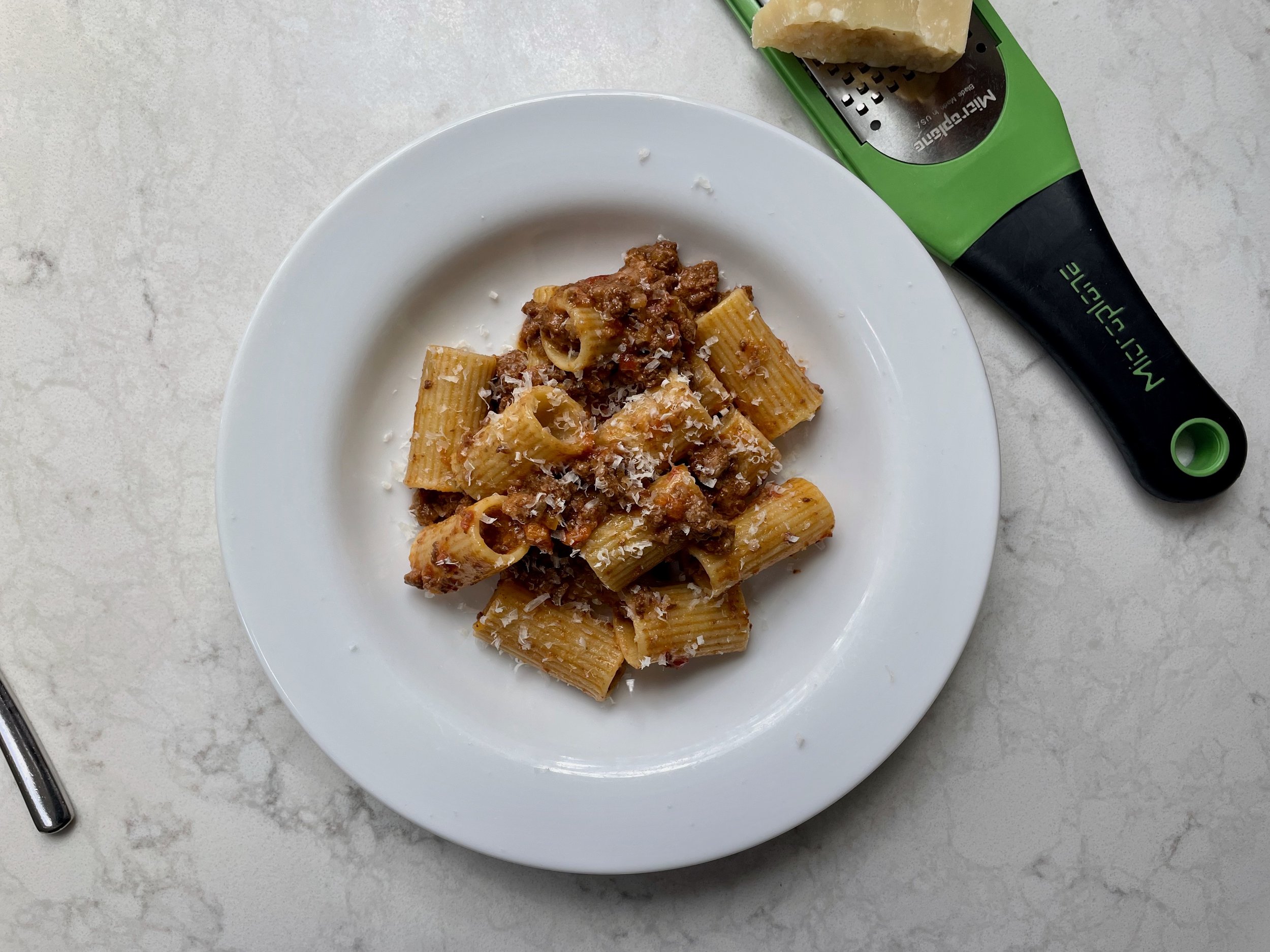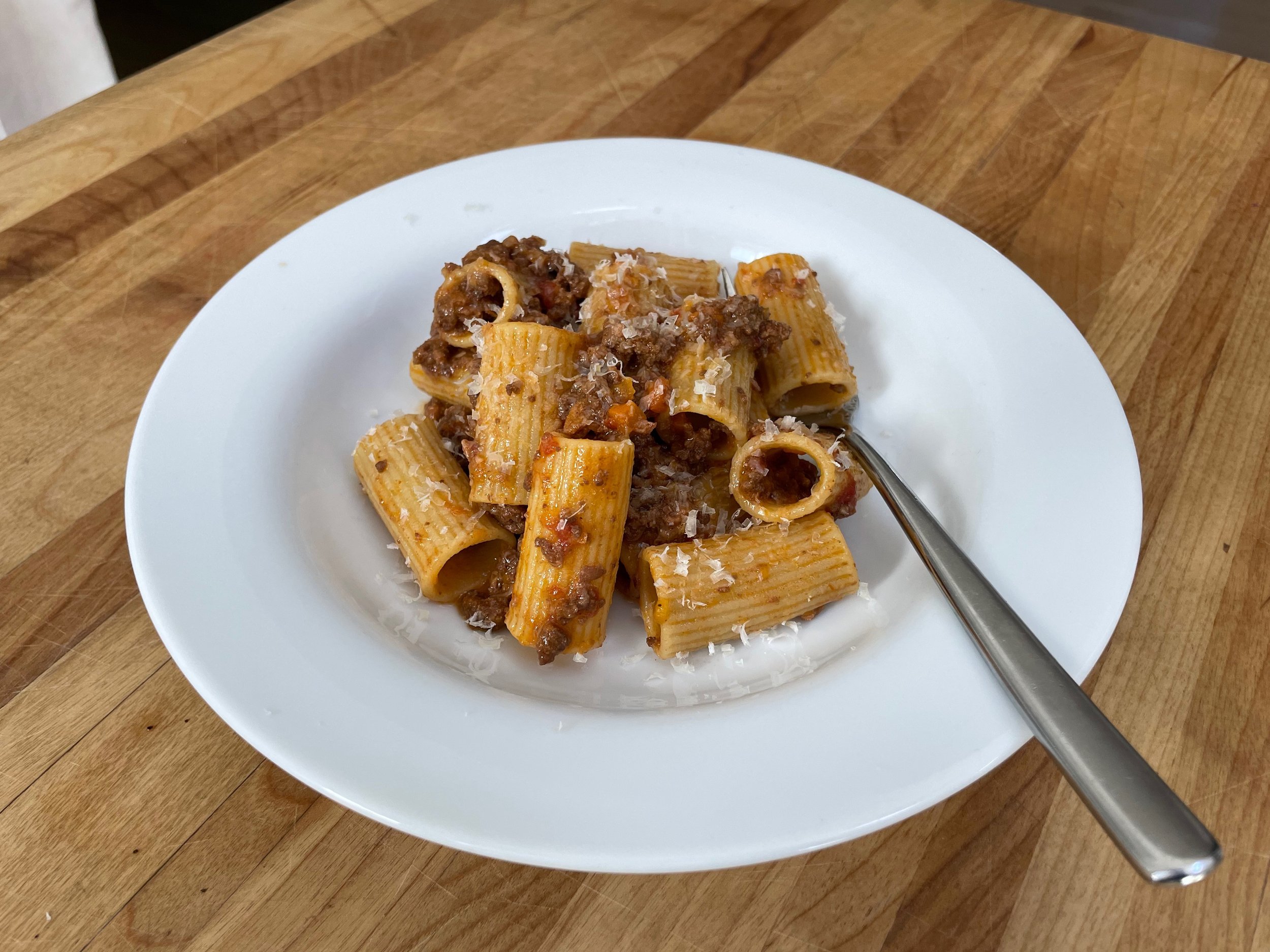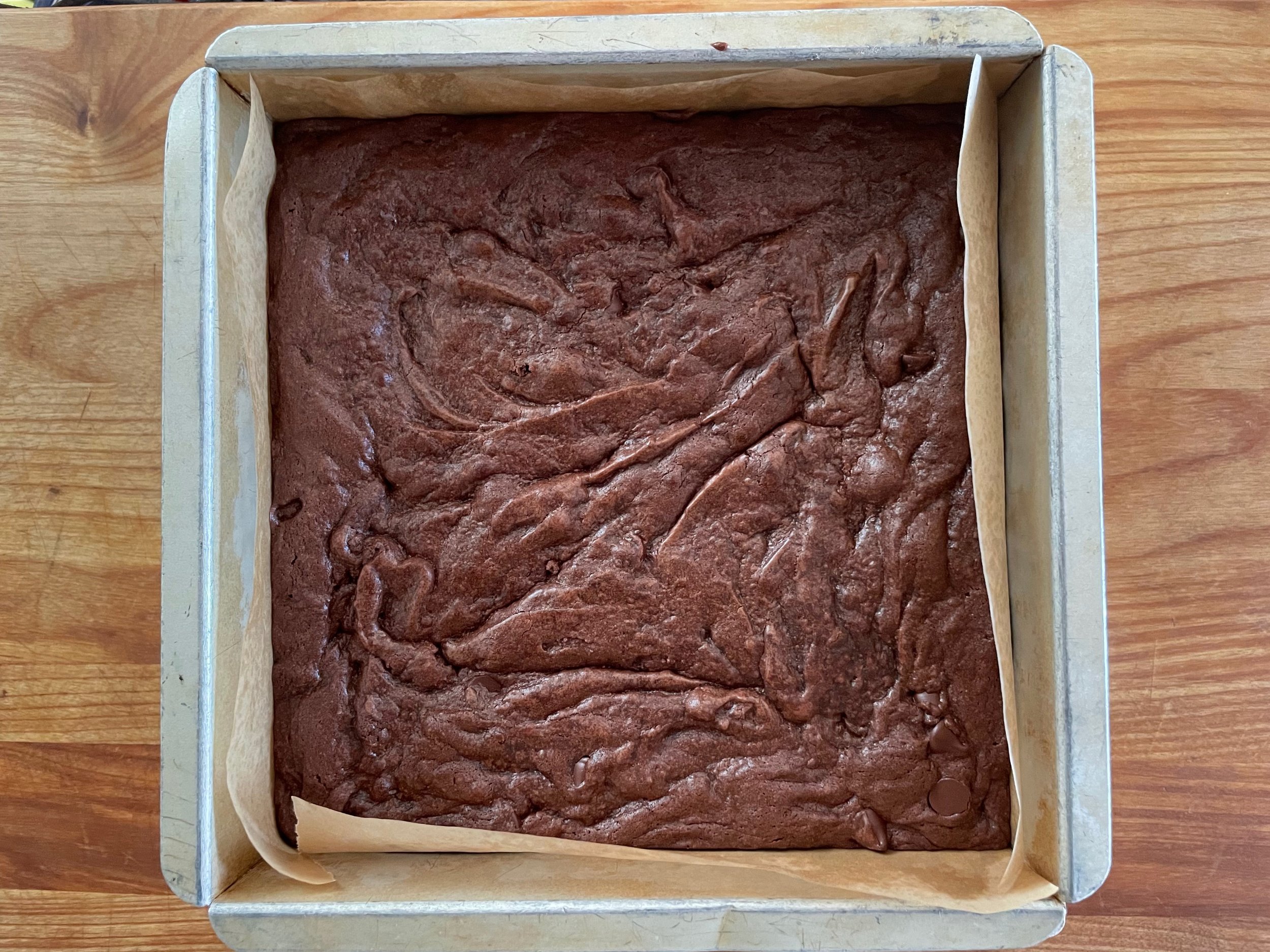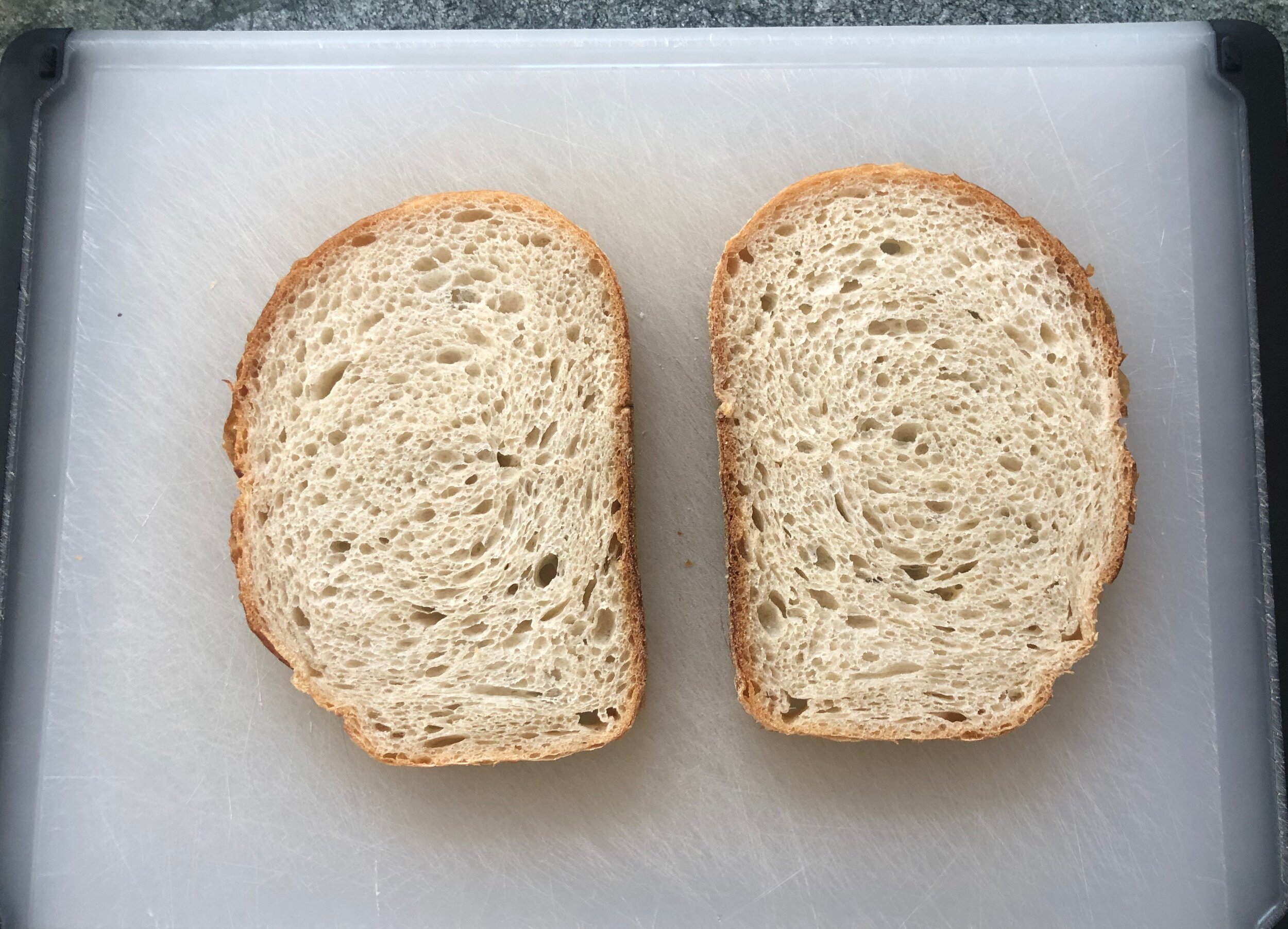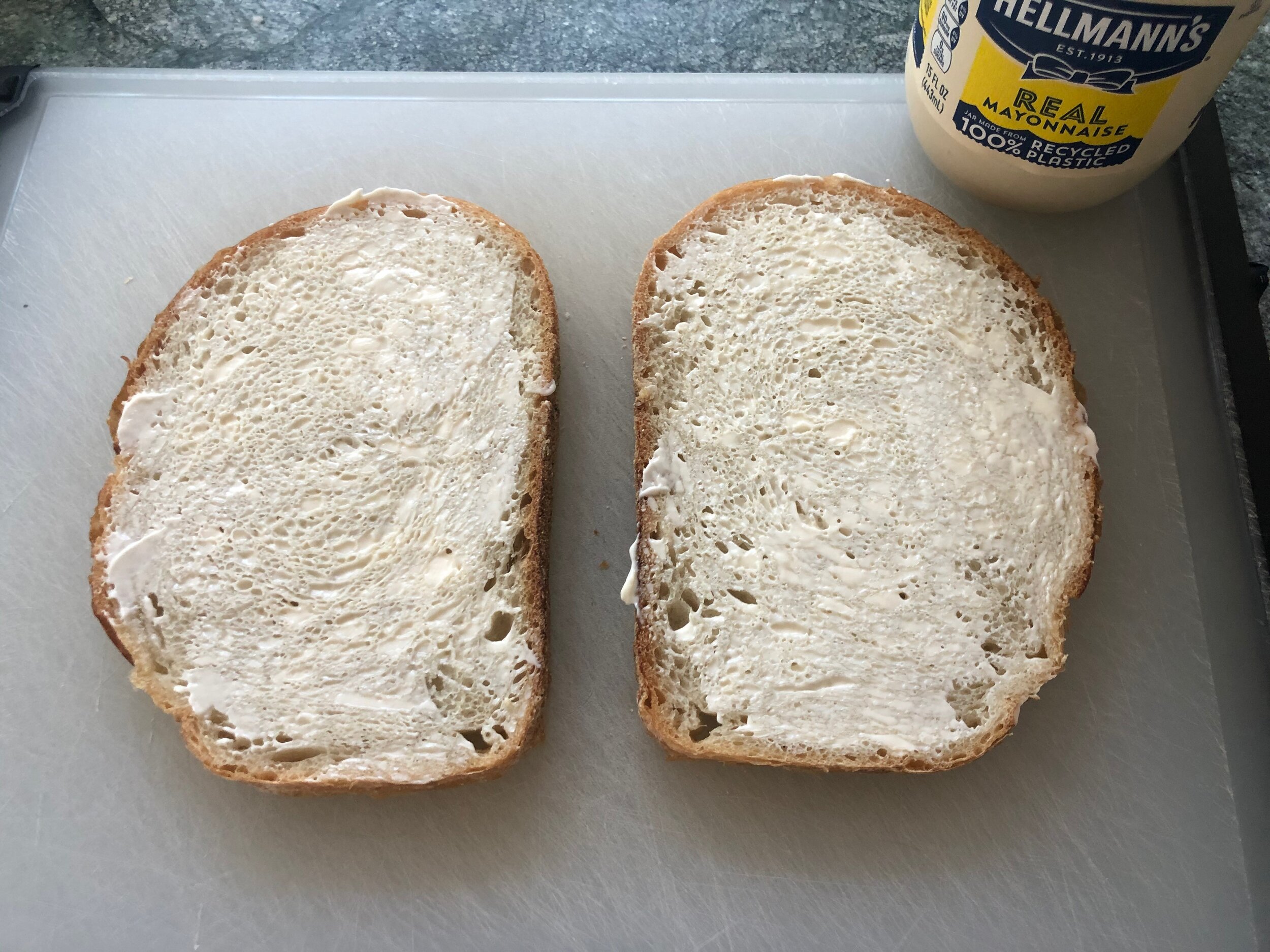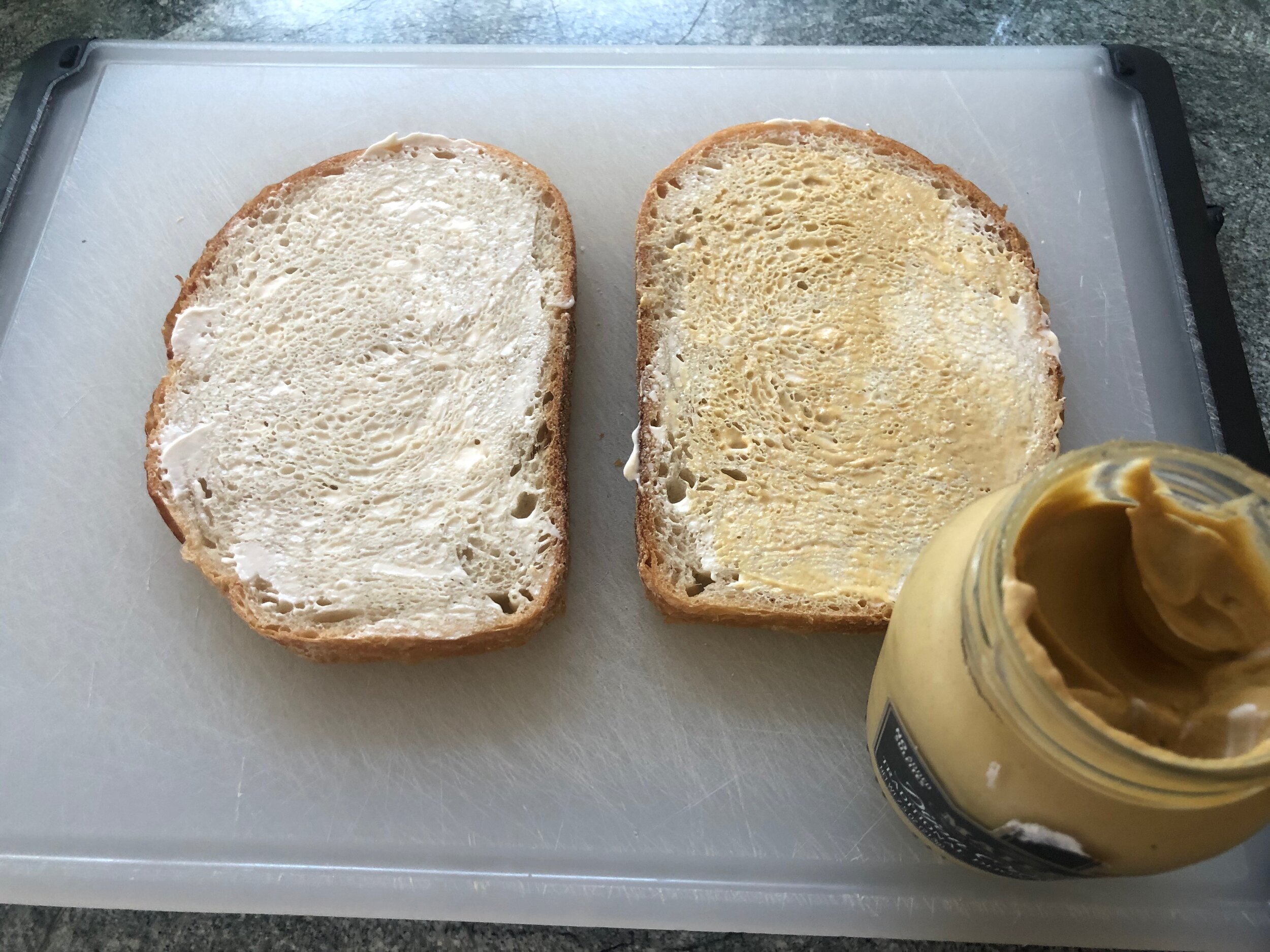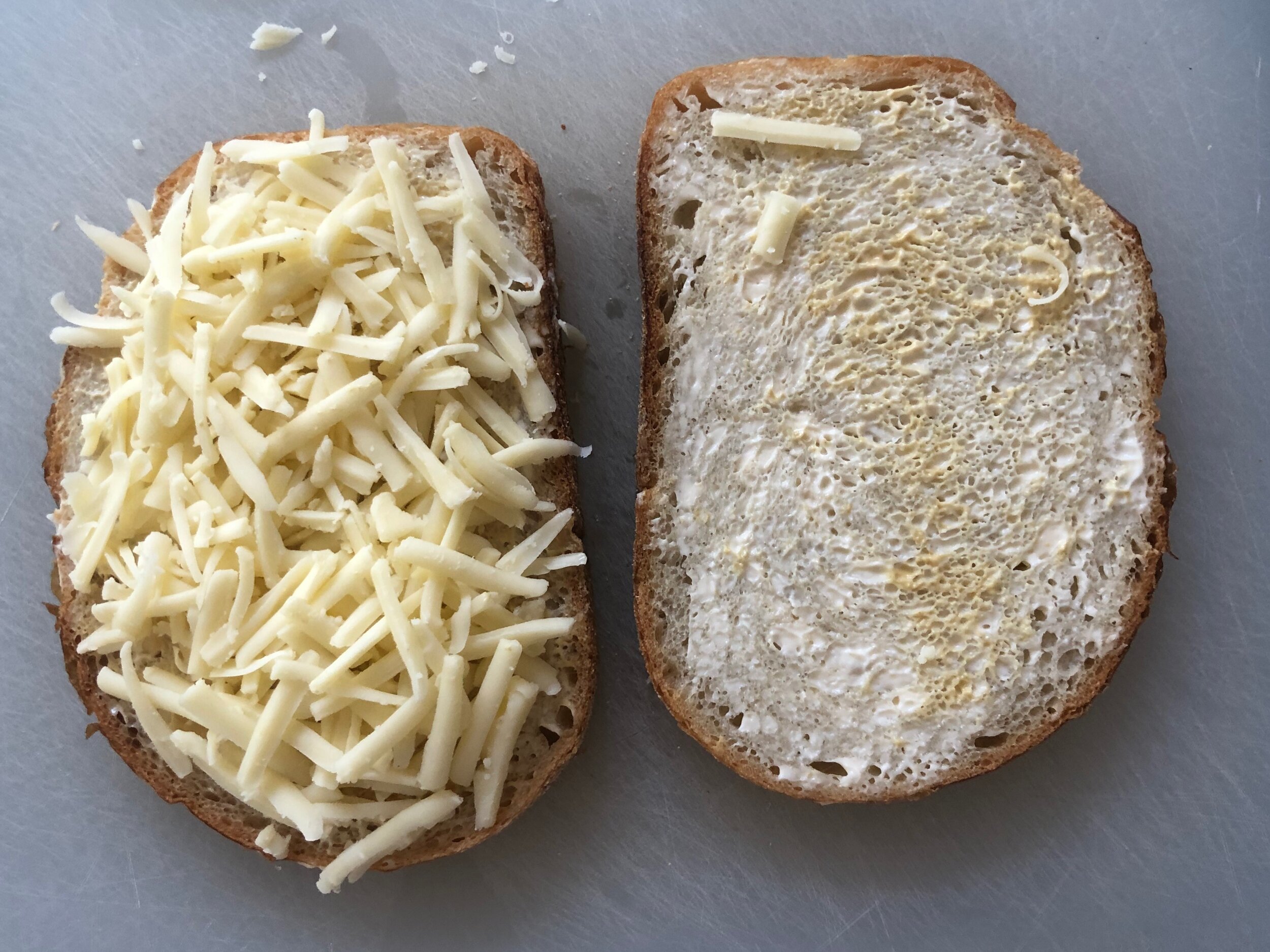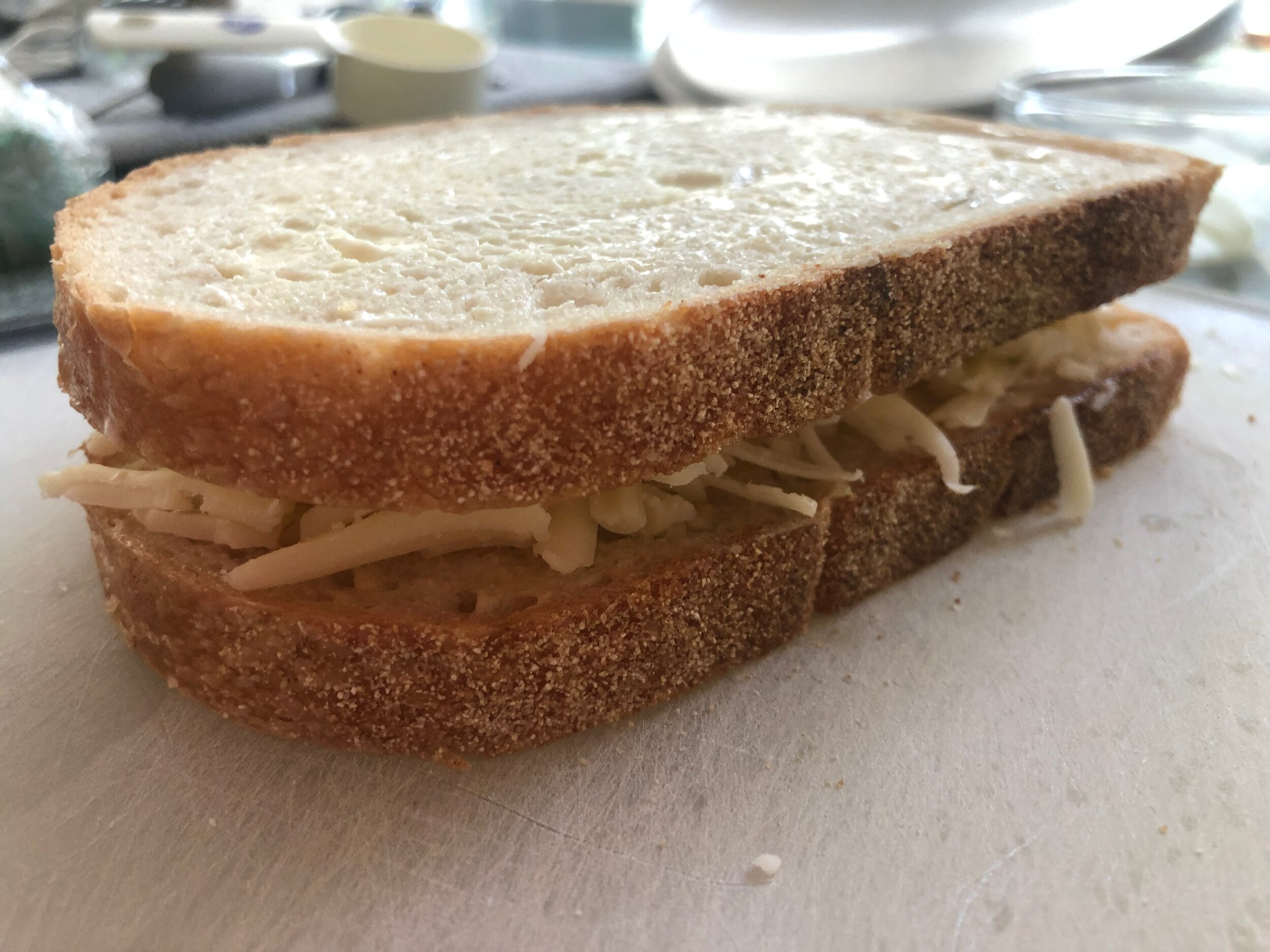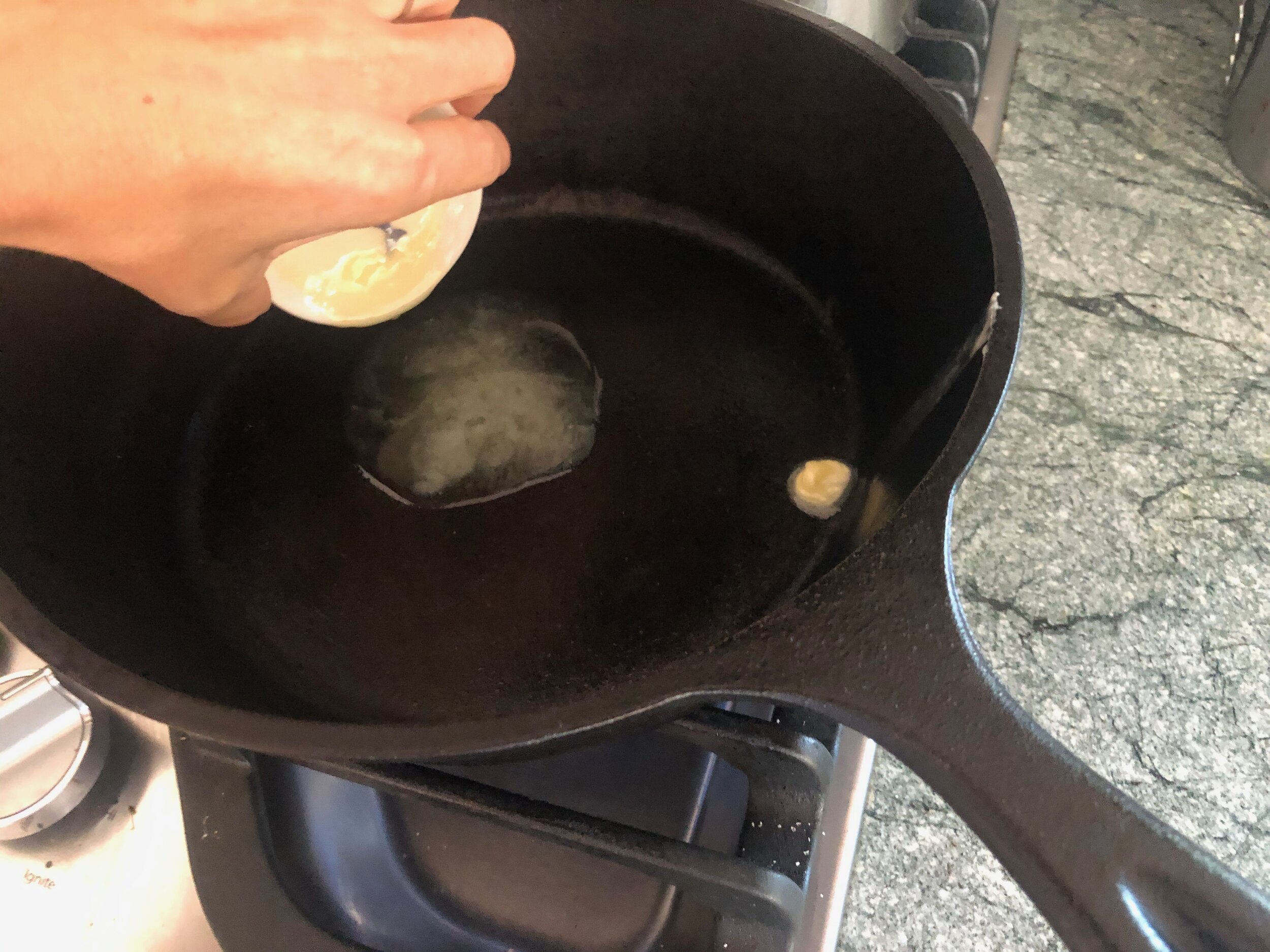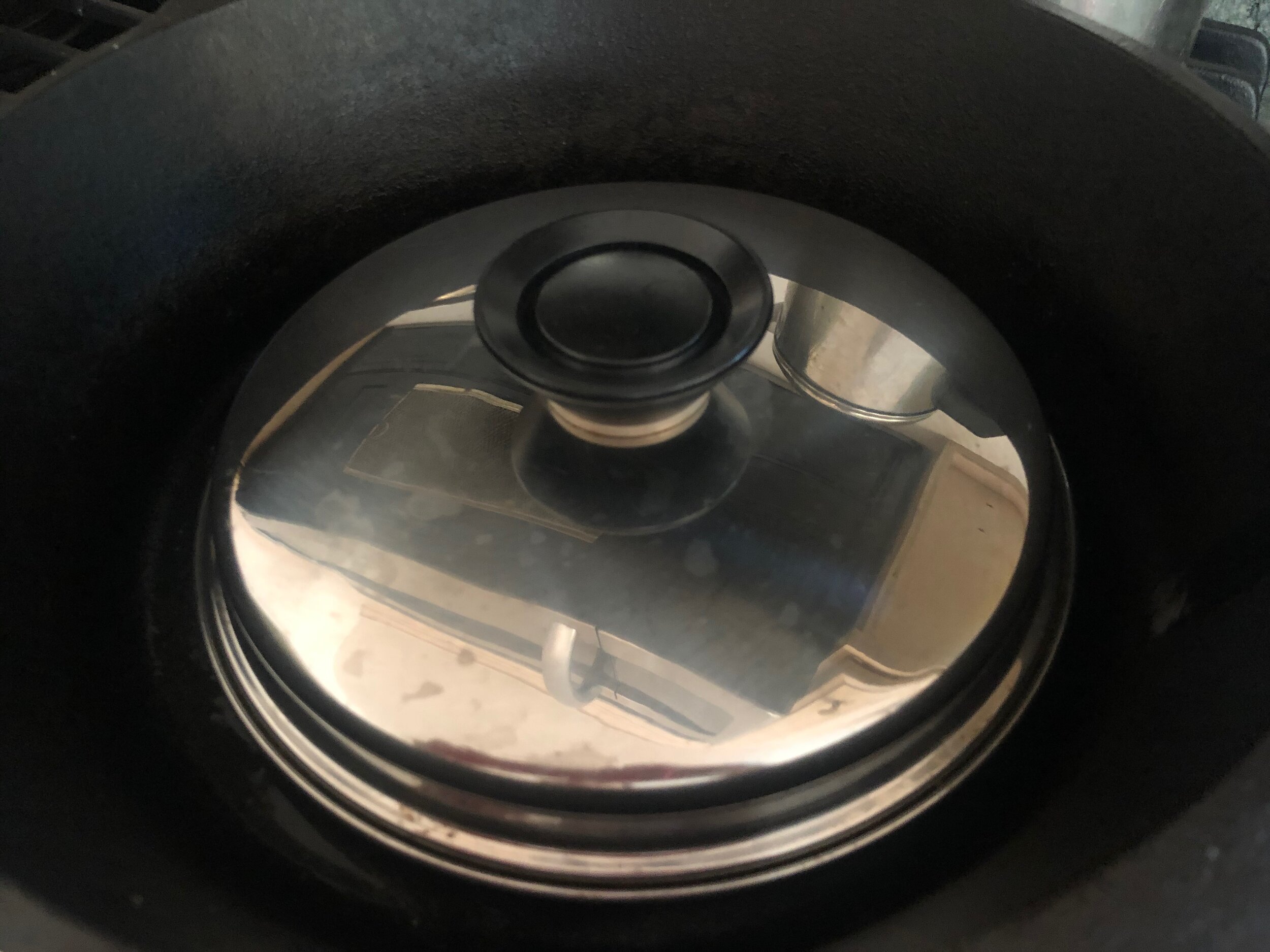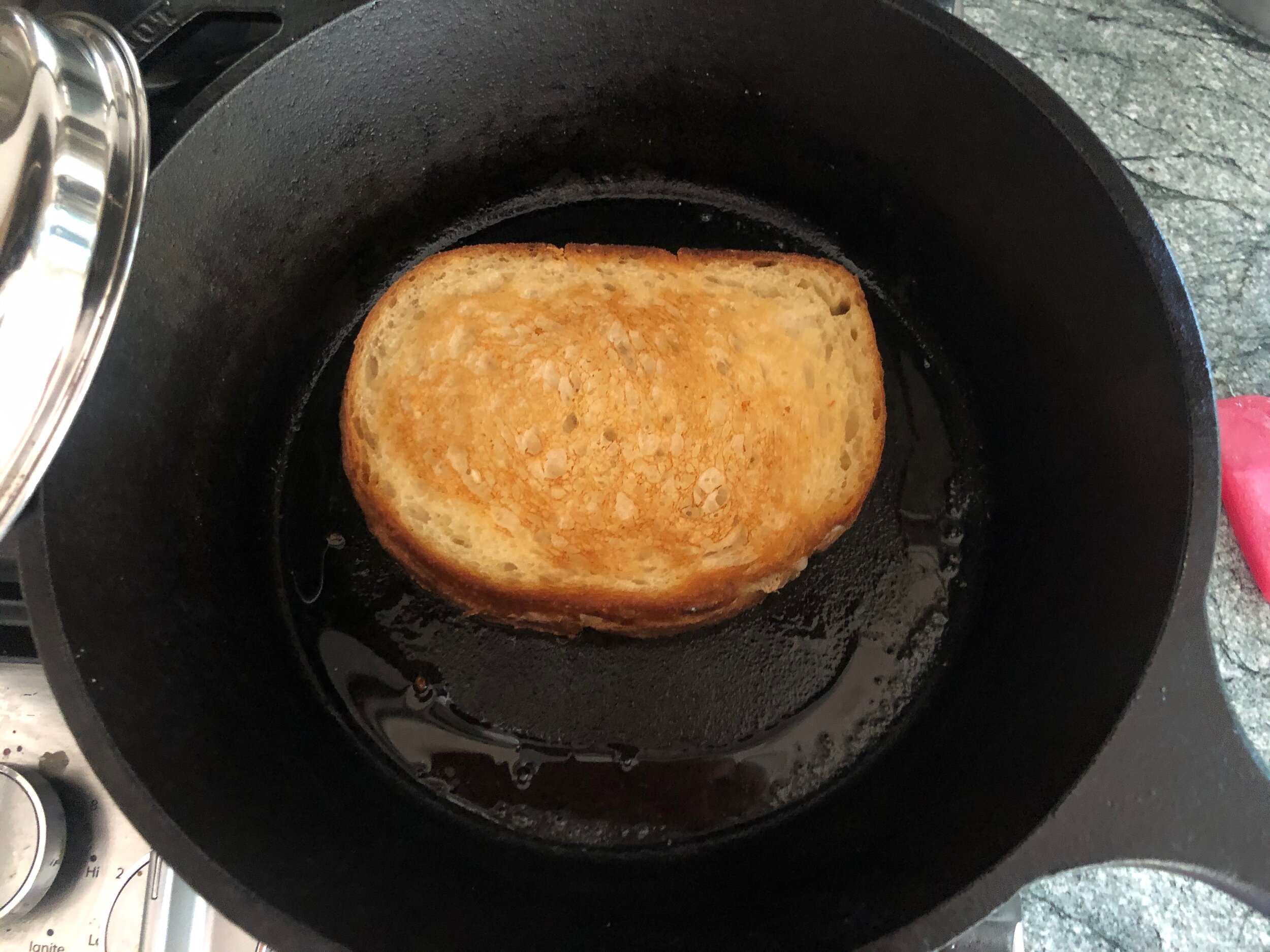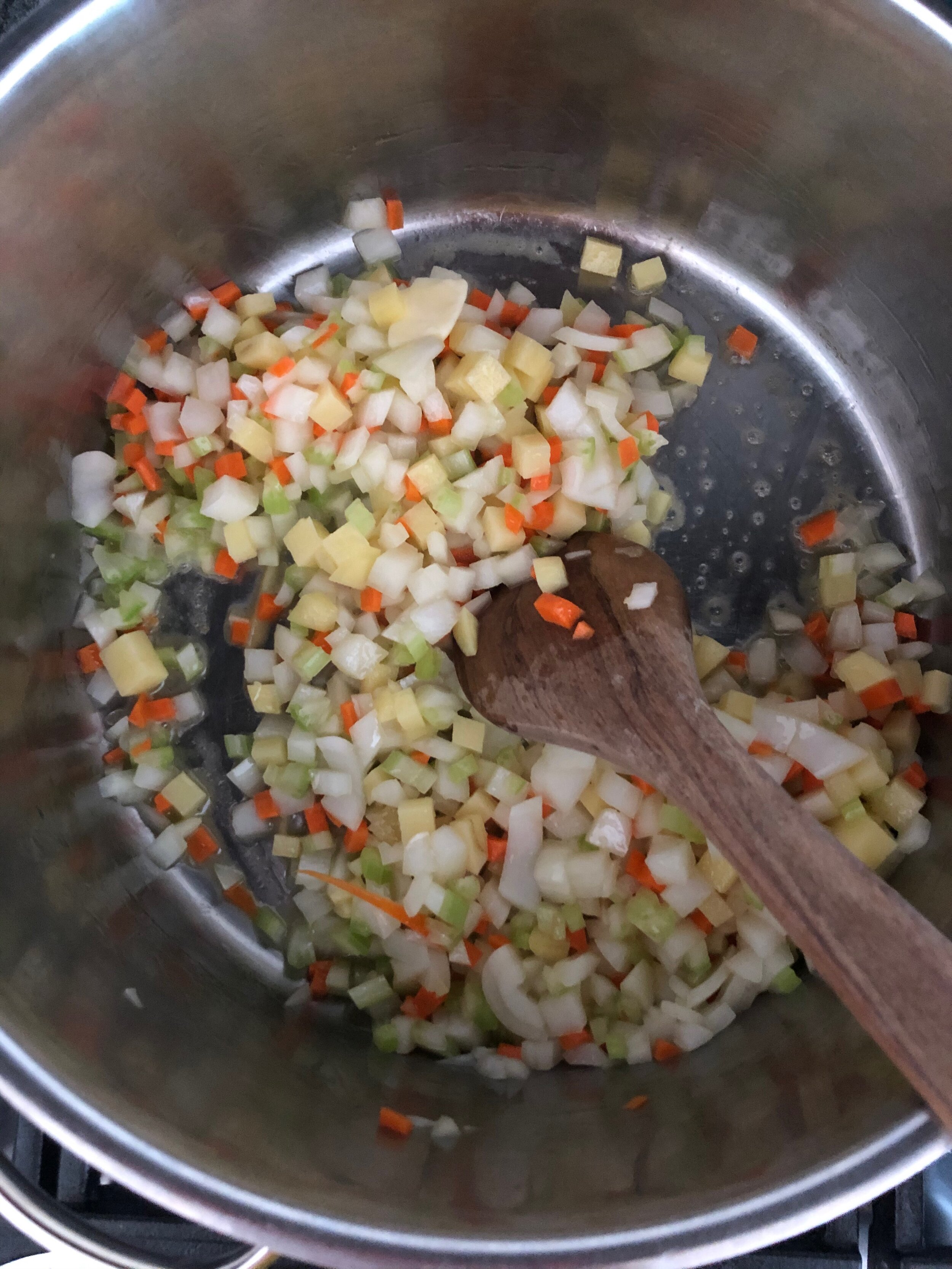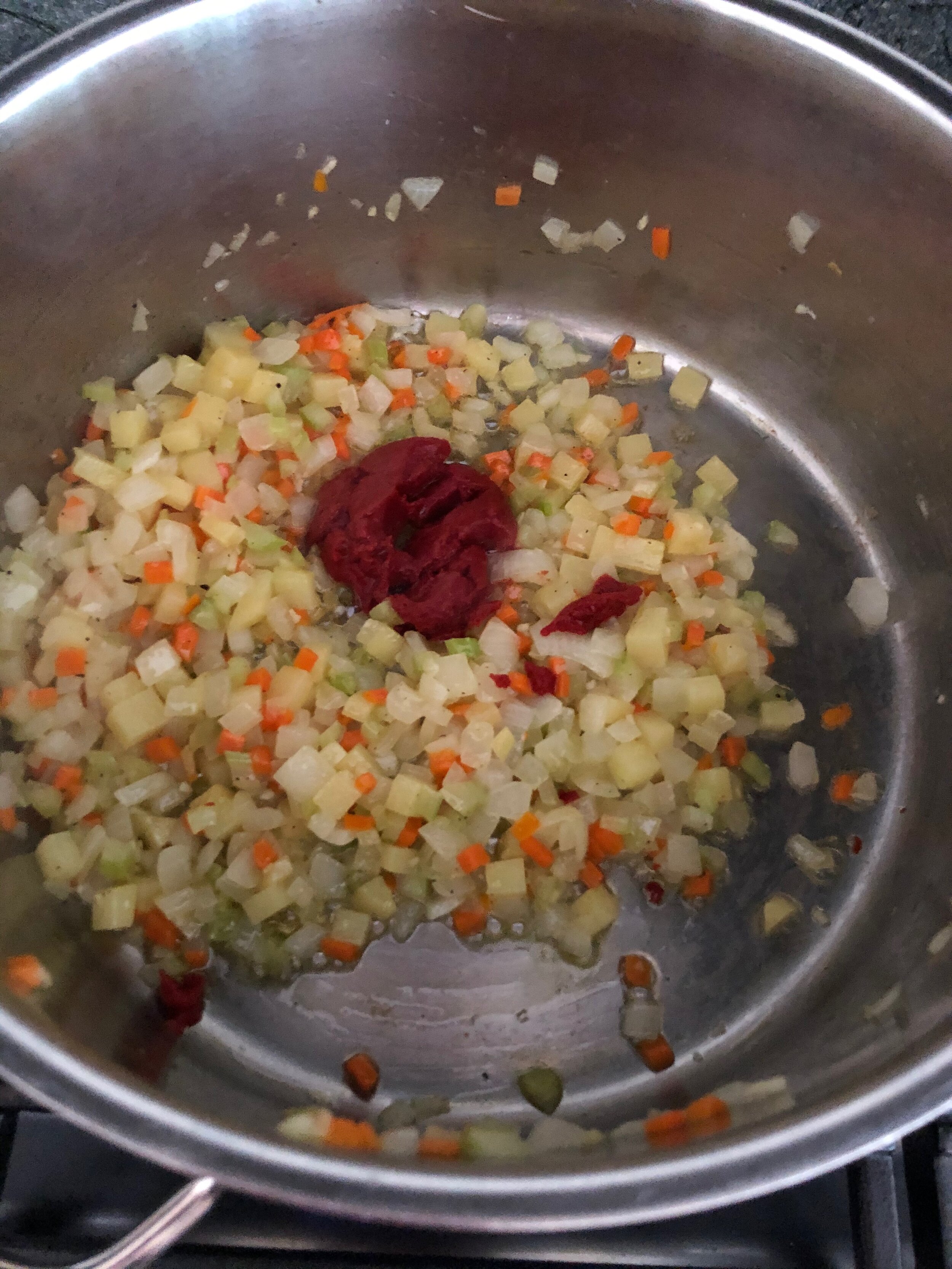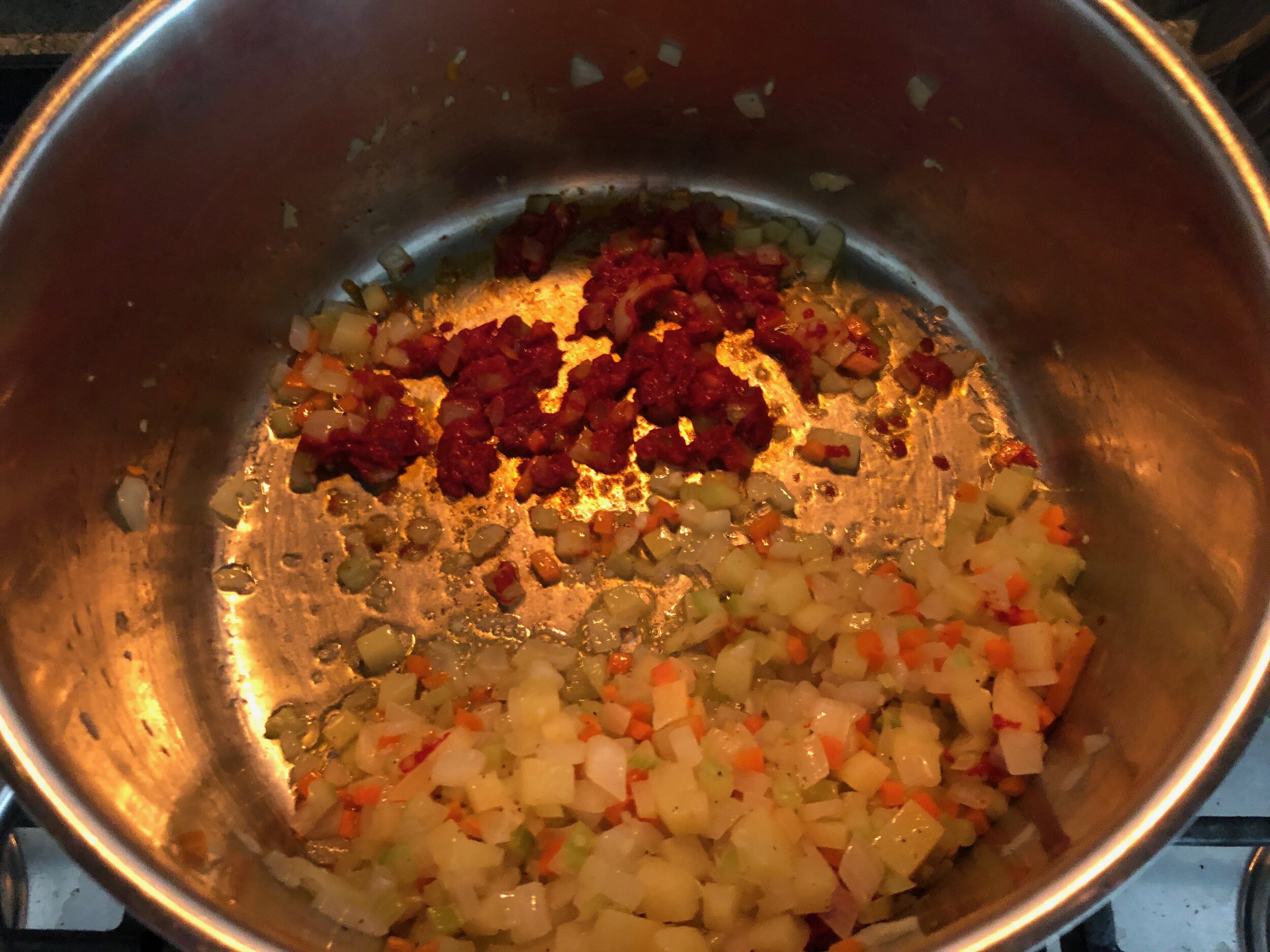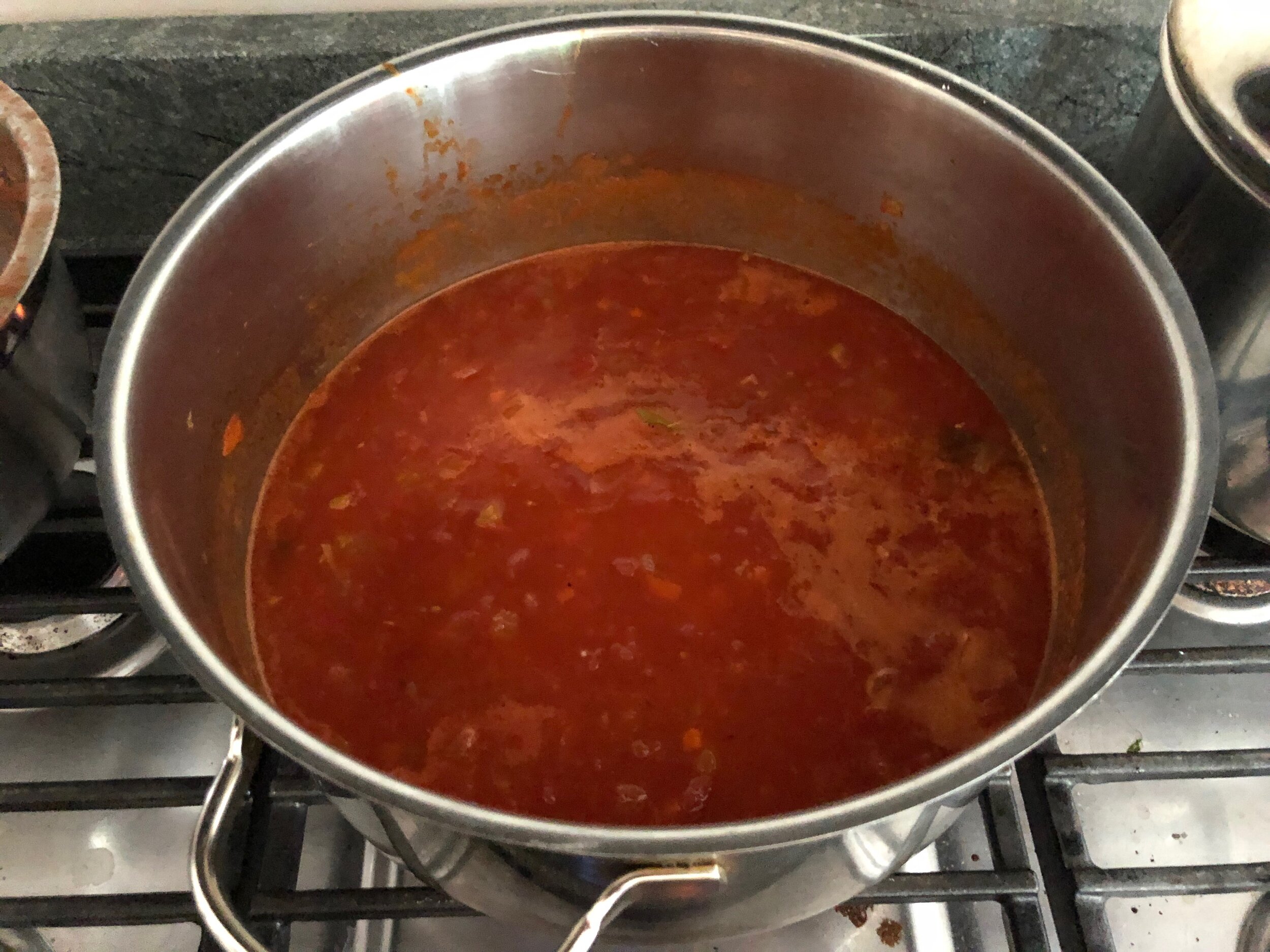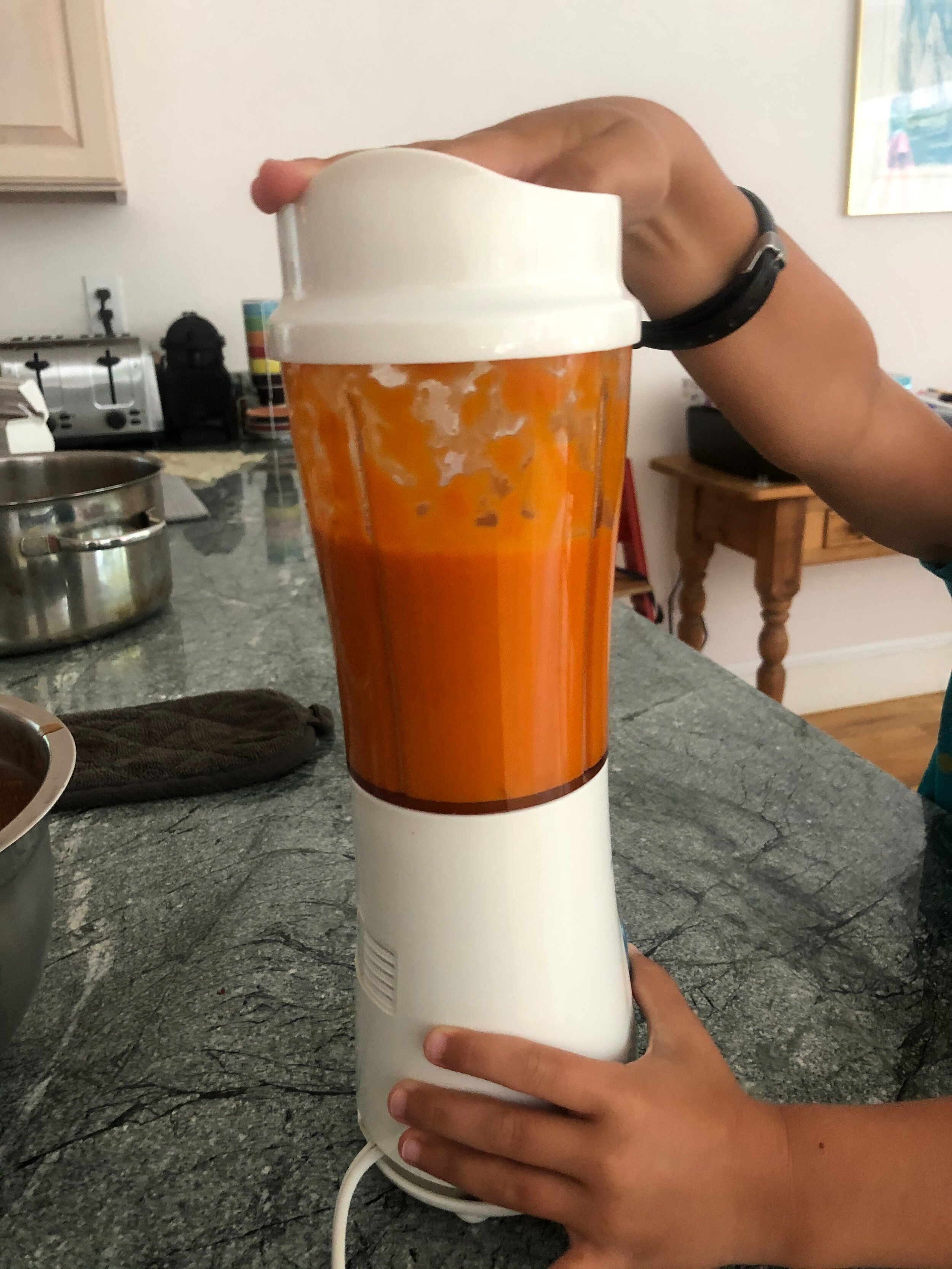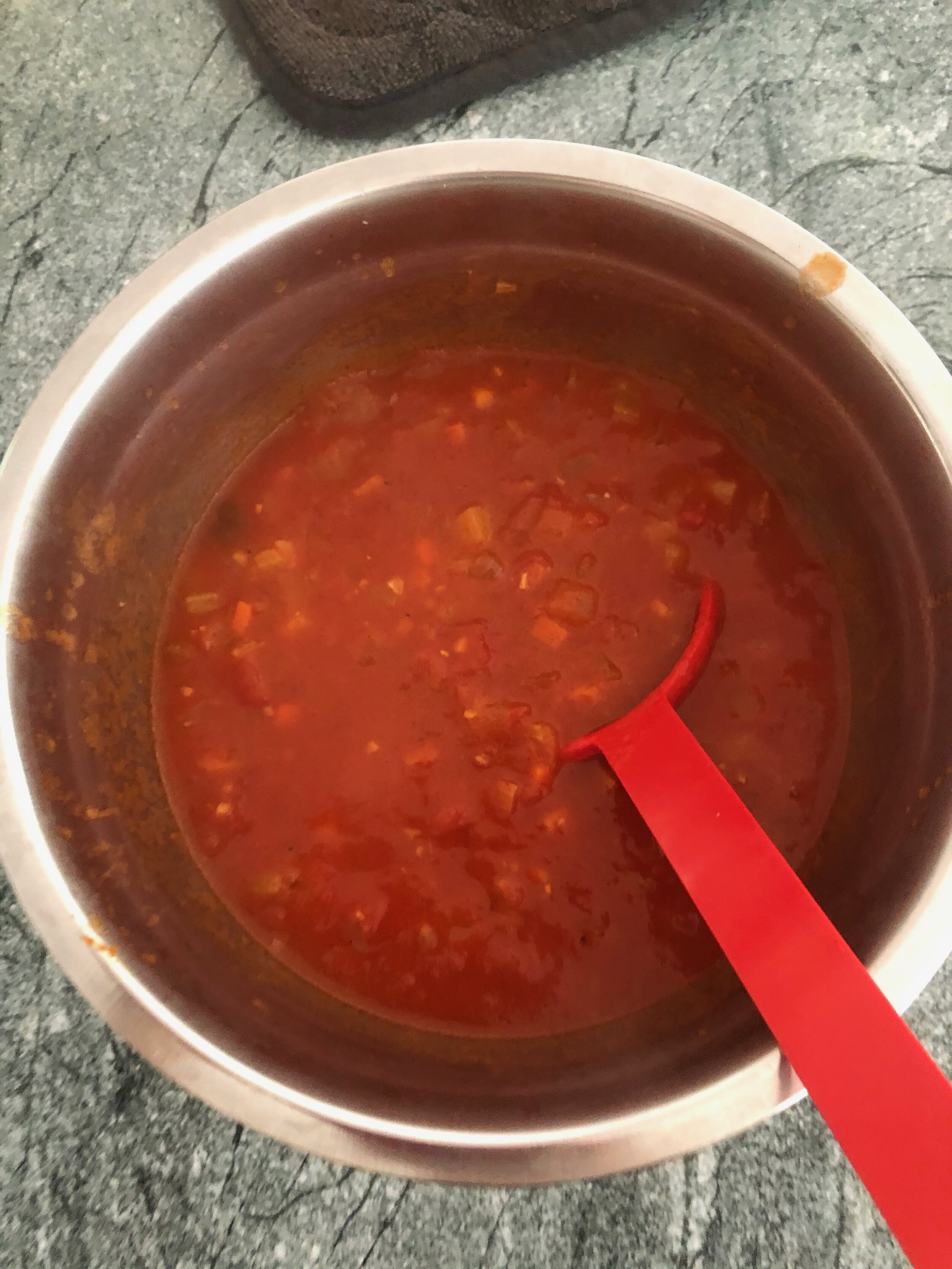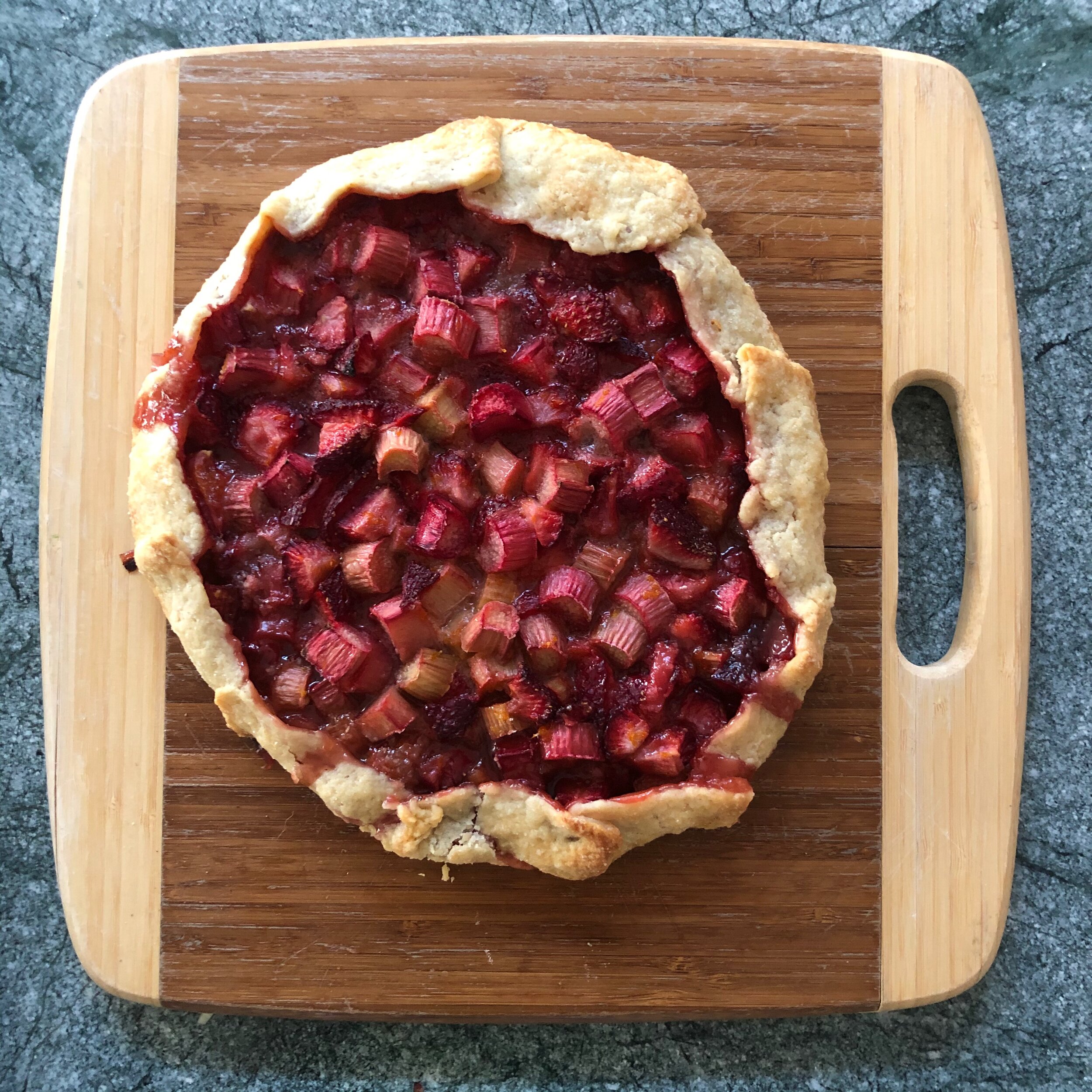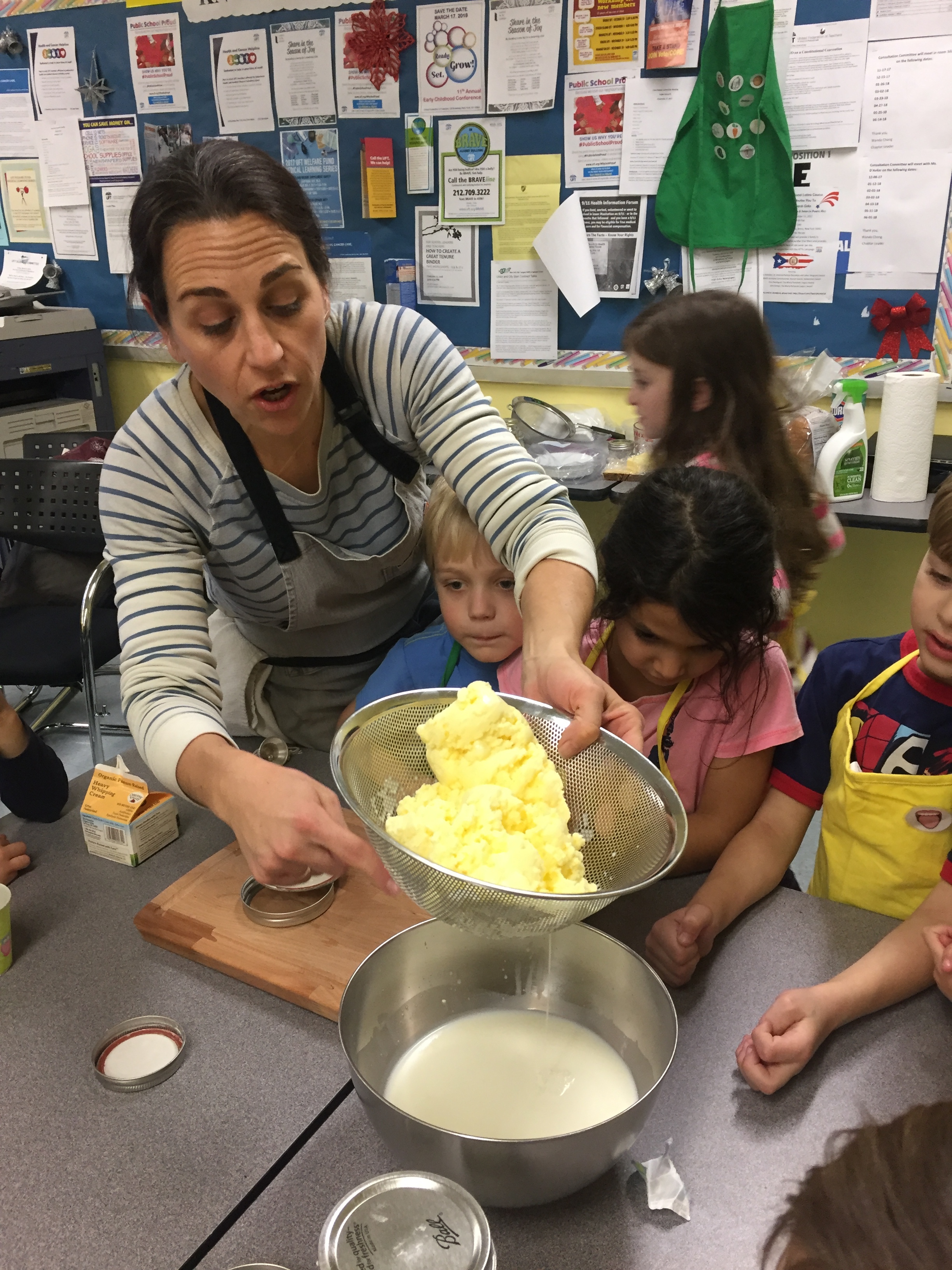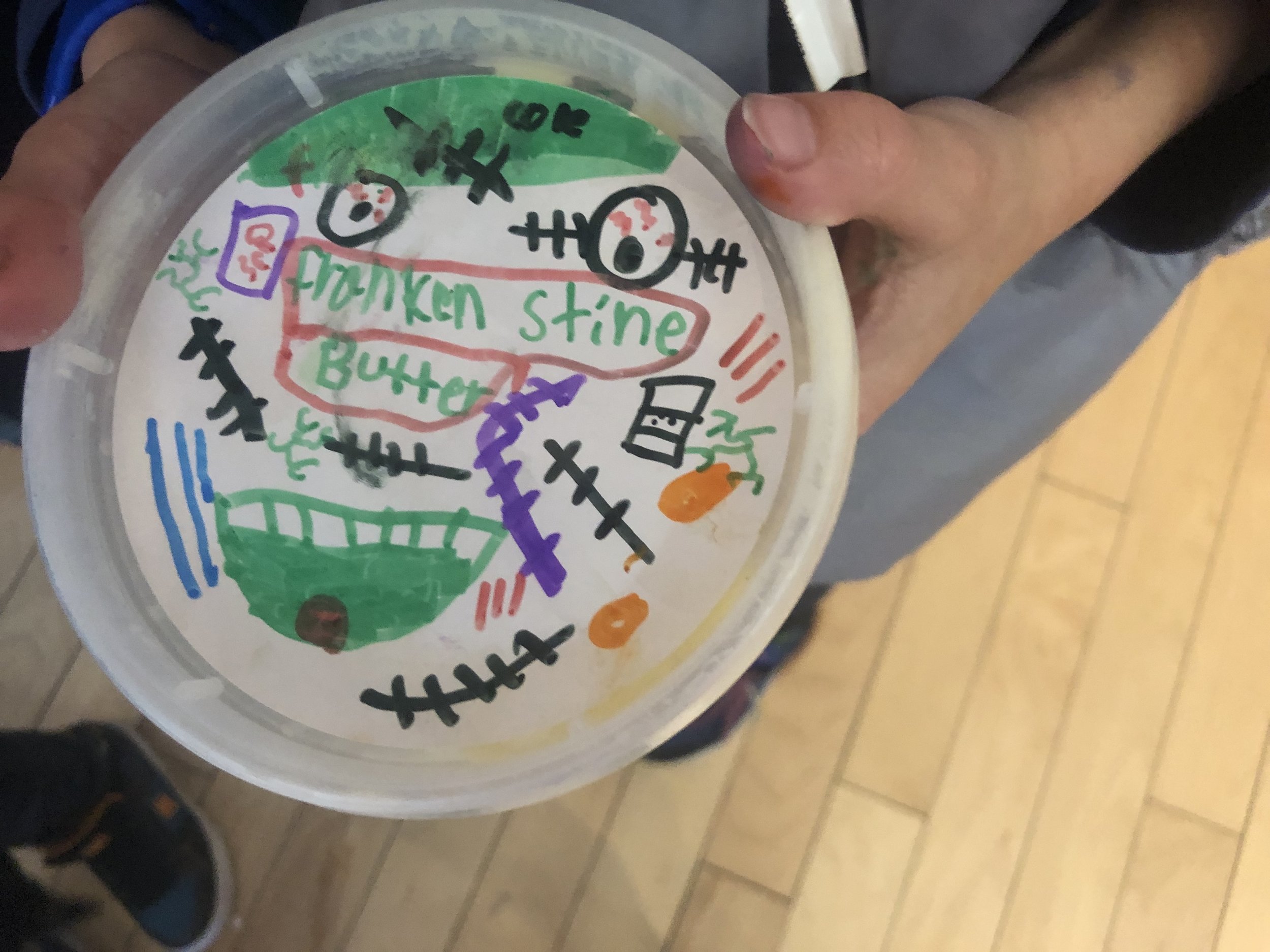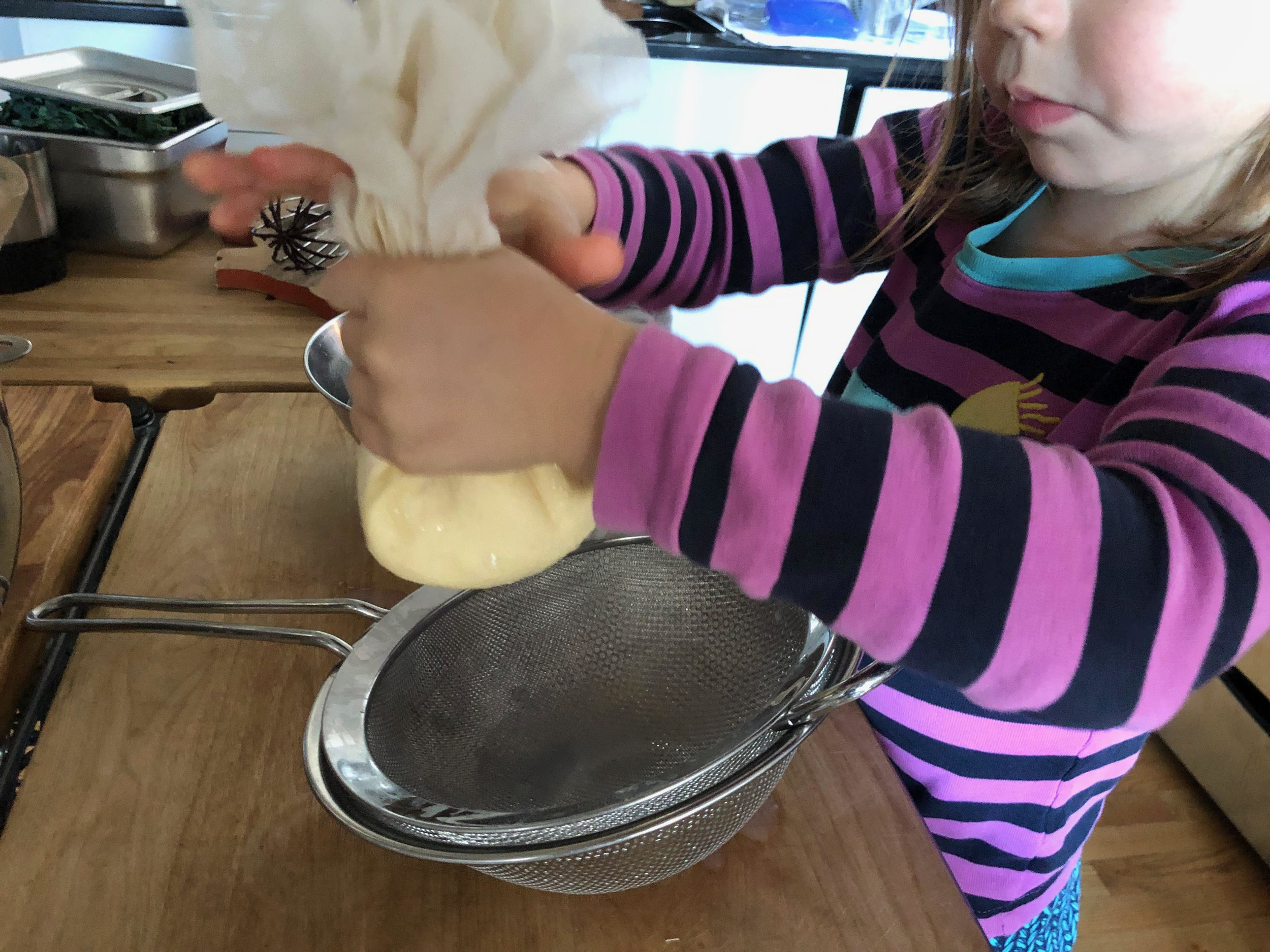I have some food traditions – cannelle on New Year’s Day, Profiteroles on my birthday, the Feast of Fishes on Christmas Eve, and a grilled paella once a summer.
Lately, I’ve been thinking that one paella is not enough, especially now that I own a Weber and while it’s still barbecue weather.
I first made this recipe as a test for Sam Sifton for The New York Times Magazine. Years before that, I was introduced to paella in Madrid, which unfortunately made me and my sister violently ill. I eased back into Spanish food not long after, but paella took me years.
I cannot claim this recipe is traditional. I know Italian food much better than I know Spanish. What I’ve read is that paella is originally from Valencia and their version contains green beans, butter or lima beans, and rabbit, chicken, or duck. This paella is a cross between a mutated Valencia paella and a seafood paella. Whatever it is, it’s pretty tasty — a one-skillet dinner party dish for a group of 10, though I’ve stretched it to 12+. In my experience, the Spanish Bomba rice is key. Italian short-grained rice works, too, in a pinch.
Over the past 15 years, I’ve tweaked the original recipe. When I have lobster stock from lobster roll making, I use that. Extra lobster, lucky you - please throw it in! When I’m out of stock and looking for a quick fish sauce, I make one using a mix of bottled clam juice, water, leftover shrimp shells, and some aromatics like onion, bay, and peppercorn. If you need to make things even simpler, use chicken broth. The only thing you cannot skimp on is the saffron. The saffron in the broth is everything! And while I love the skin-on, bone-in chicken, and shrimp with the shell-on (both of which help flavor the dish,) most of my clients (i.e. my family and friends,) love it when I remove the skin, bones, and shells for them.
So here is my adapted recipe. Hope you love it as much as I do.
My favorite Paella
Serves about 10.
Ingredients:
For the paella:
2 pounds shell-on shrimp (large to jumbo work)
1/4 to 1/2 cup extra-virgin olive oil
Salt
Freshly ground black pepper
2 pounds boneless, skinless chicken thighs, cut into 2-inch pieces
12 to 16 ounces chorizo, cut into half moons
1 large onion, peeled and finely chopped
1 tablespoon minced garlic
3 1/4 cups short-grained Spanish rice, such as Bomba (Arborio also works)
1 1/2 cups fresh or frozen peas or favas
16 small littleneck clams, cleaned
1 pound mussels, debearded and cleaned
Stock, from below
Charcoal
A handful of fruitwood chops (or other wood chips) (optional), soaked in water for at least 30 minutes
2 tablespoons finely chopped parsley
For a quick fish stock:
4 cups clam juice
5 cups cold water
½ yellow onion
Bay leaf
Shrimp shells (from shrimps below)
10 peppercorns
3 parsley stems
One large pinch saffron
Salt
Freshly ground black pepper
Steps:
1. Shell and devein the shrimp. Set shells aside. Refrigerate shrimp.
2. Make the stock: In a large pot, bring the clam juice, water, onion, bay leaf, reserved shrimp shells, peppercorns, and parsley stems to a boil, then lower heat and simmer for 30 minutes. Strain. (Alternatively, you can make or buy a fish stock – you’ll want 2 quarts total.) Add the saffron to the stock and simmer for 5 minutes more. Keep the broth warm. Taste and season the stock with enough salt and pepper so that it tastes delicious.
3. Start the paella: Set an 18-to-22-inch paella pan over medium-high heat on the stove top. Add ¼ cup olive oil. Season the chicken thighs all over with salt and pepper and brown on both sides in the hot oil. Transfer to a baking sheet or large platter. Cook the chorizo in the same pan until browned. Transfer to a plate. If needed, add more oil to coat the pan. Add the onion and cook until translucent, about 4 minutes. Season with salt. Add the garlic and stir until fragrant, then add the rice and stir to coat. Toast the rice for 1 to 2 minutes. Add a ladleful of stock, then stir in the peas, chorizo, and chicken pieces, and remove from the heat.
4. Light a charcoal grill. Carry the remaining stock and other ingredients to the grill. Check the fire: it’s ready when the charcoals are orange and gray and you cannot hold your hand over them. If using, pull the wood chips from the water and drop them over the charcoals, set the grill rack over them, then set the paella pan on the rack. Pour the warm stock into the paella pan. Cover the grill and cook the paella for 15 minutes. Remove the lid and nestle the clams and mussels, hinge-side up, into the paella, as well as the shrimp. Continue to cook for 10 to 15 minutes more, until the liquid has absorbed and the rice is dry on top. Season with salt and pepper to taste and top with parsley. Adapted from The New York Times Magazine.
NOTE #1: If you don’t have a paella pan, a large wide shallow saucepan that can go on the grill may be substituted. If you’re gonna make paella a thing, consider buying a pan. You will love it!
NOTE #2: You can swap 2 pounds skin-on, bone-in chicken for the 2 pounds skinless and deboned. And you can leave the shrimp shells on. Bone-in chicken makes for a more flavorful dish, though messier to eat!
NOTE #3: Soaked wook chips add even more smokiness to this dish. They are not needed, but if you remember or have them around, throw them onto the charcoals!
